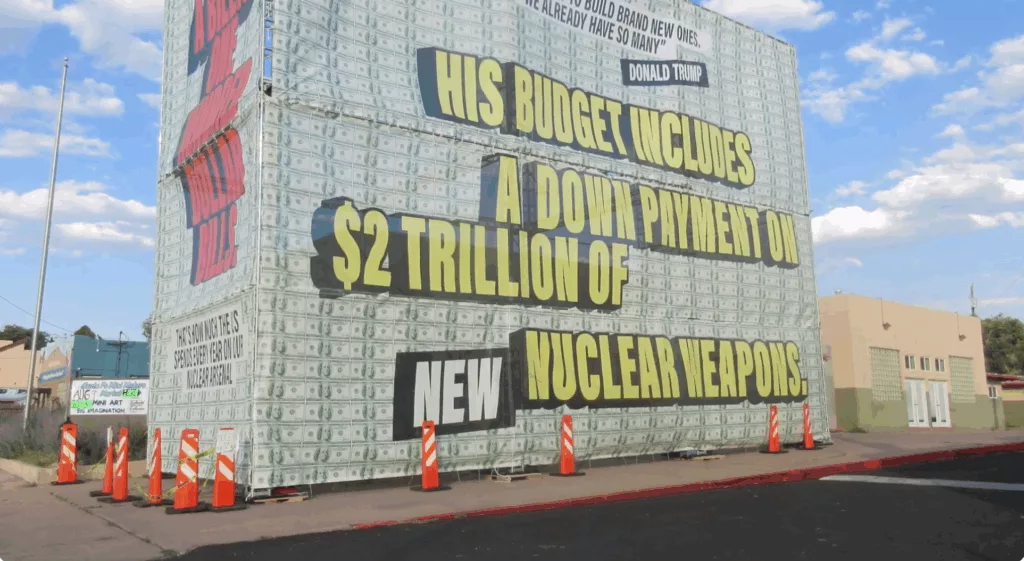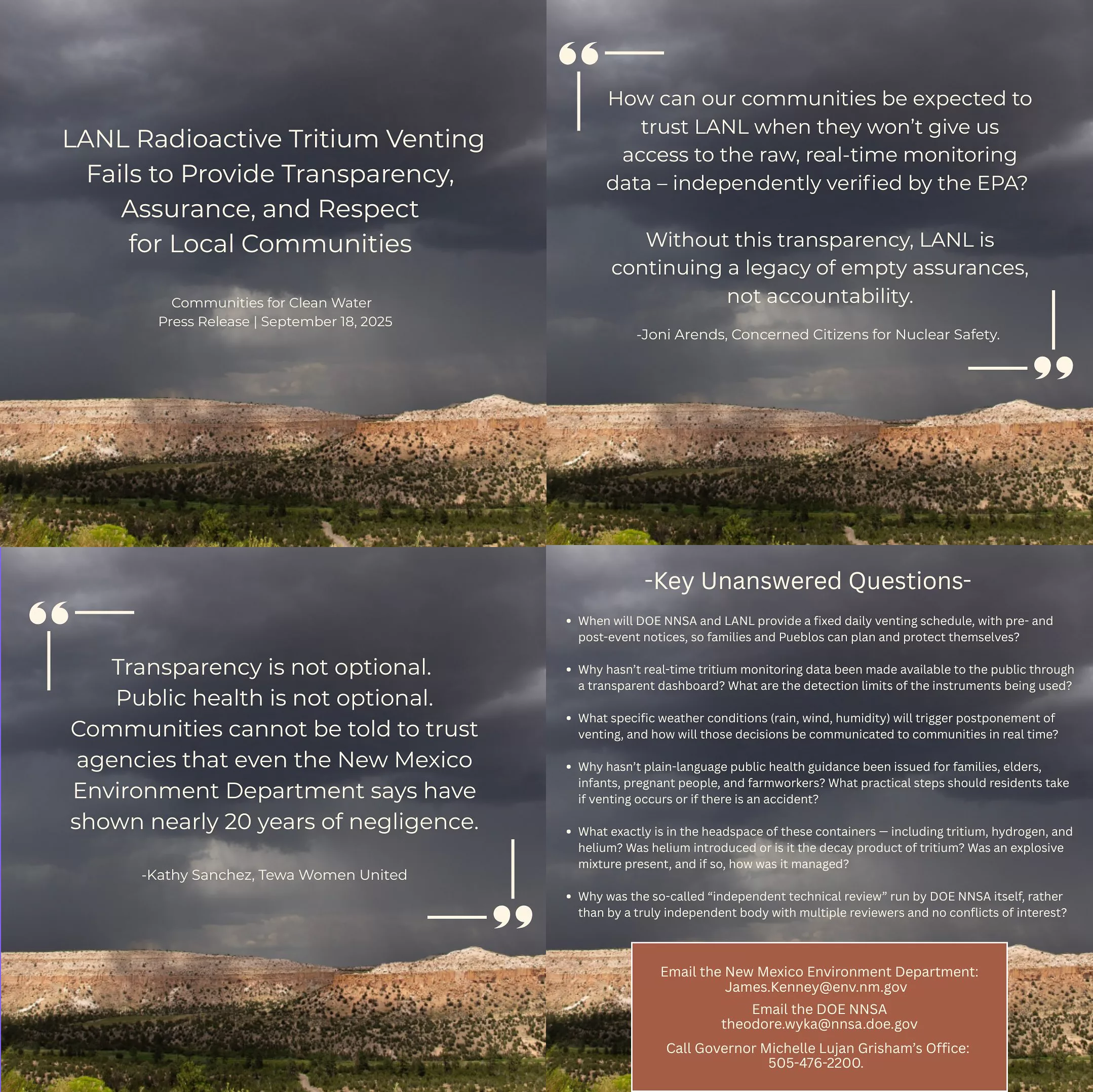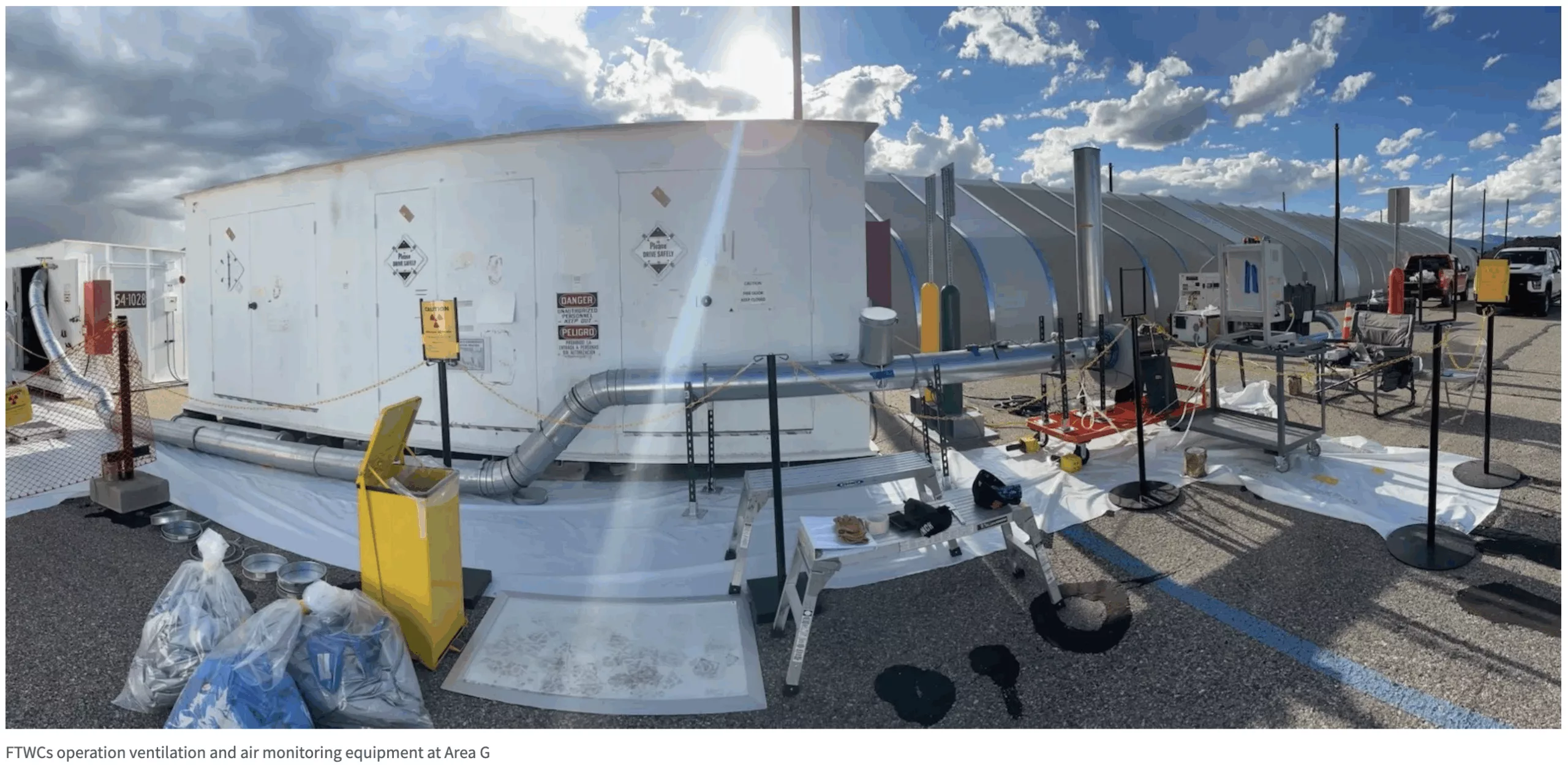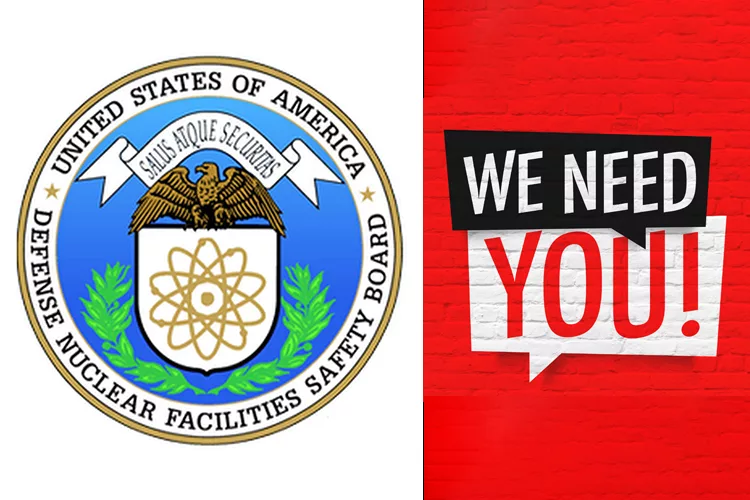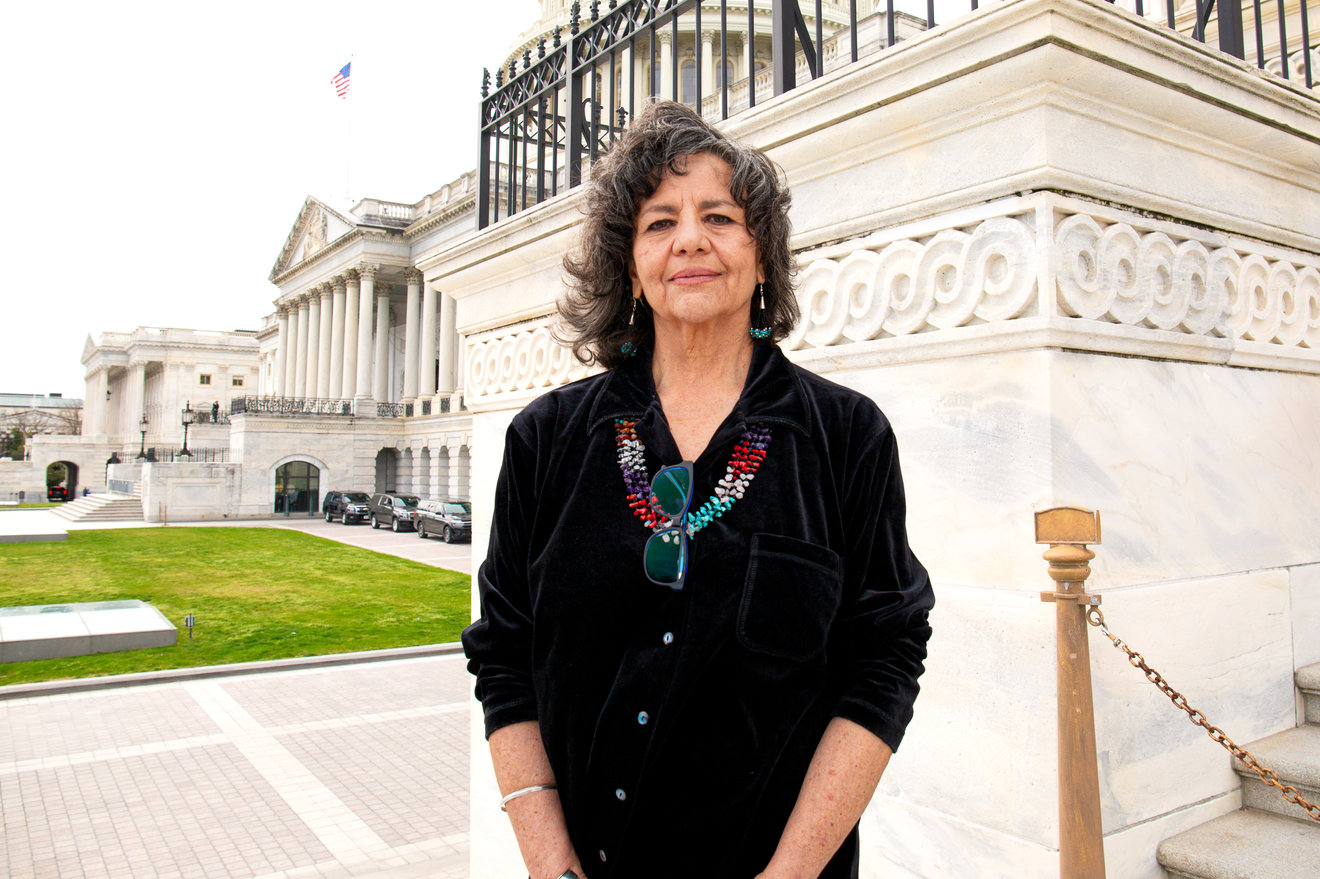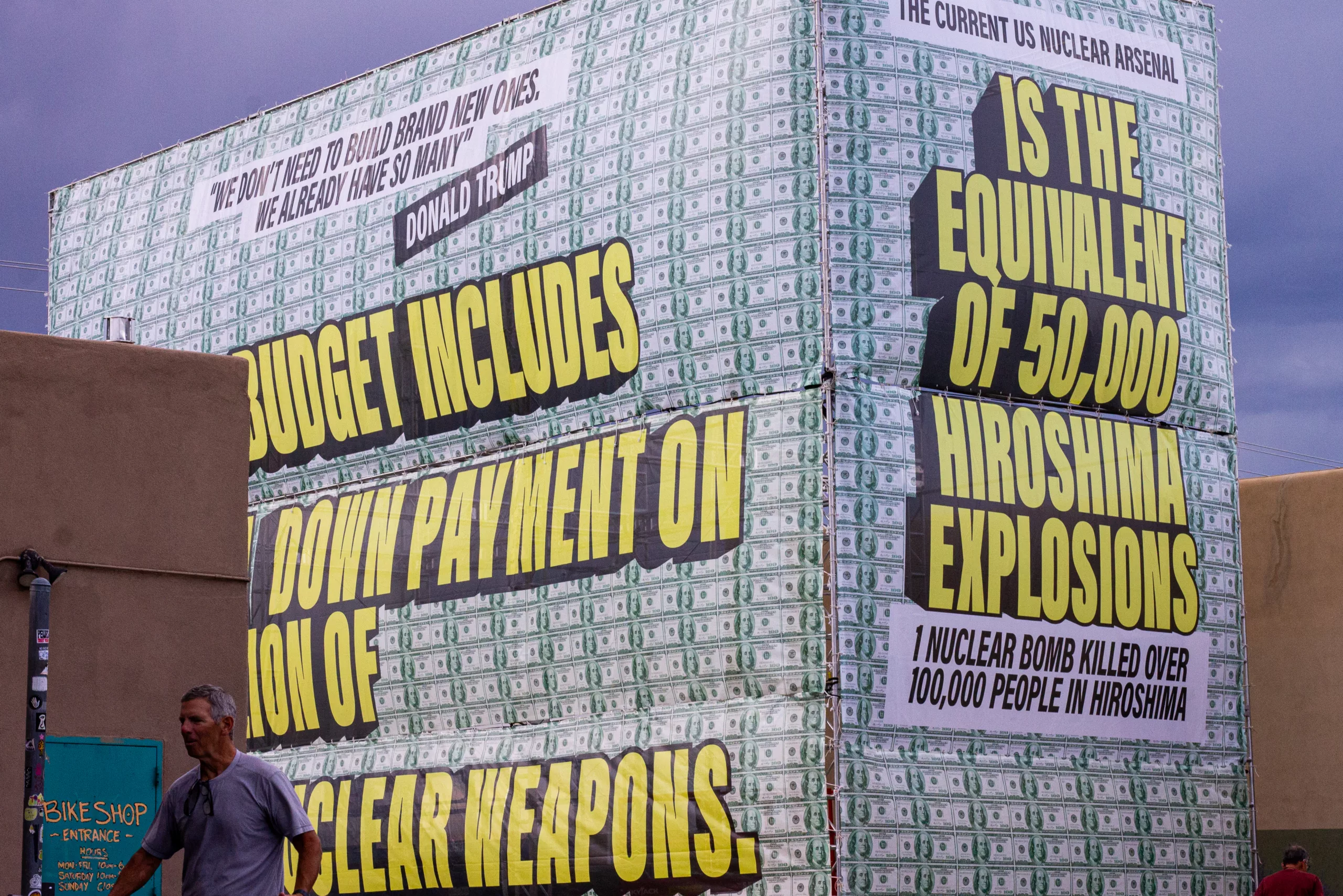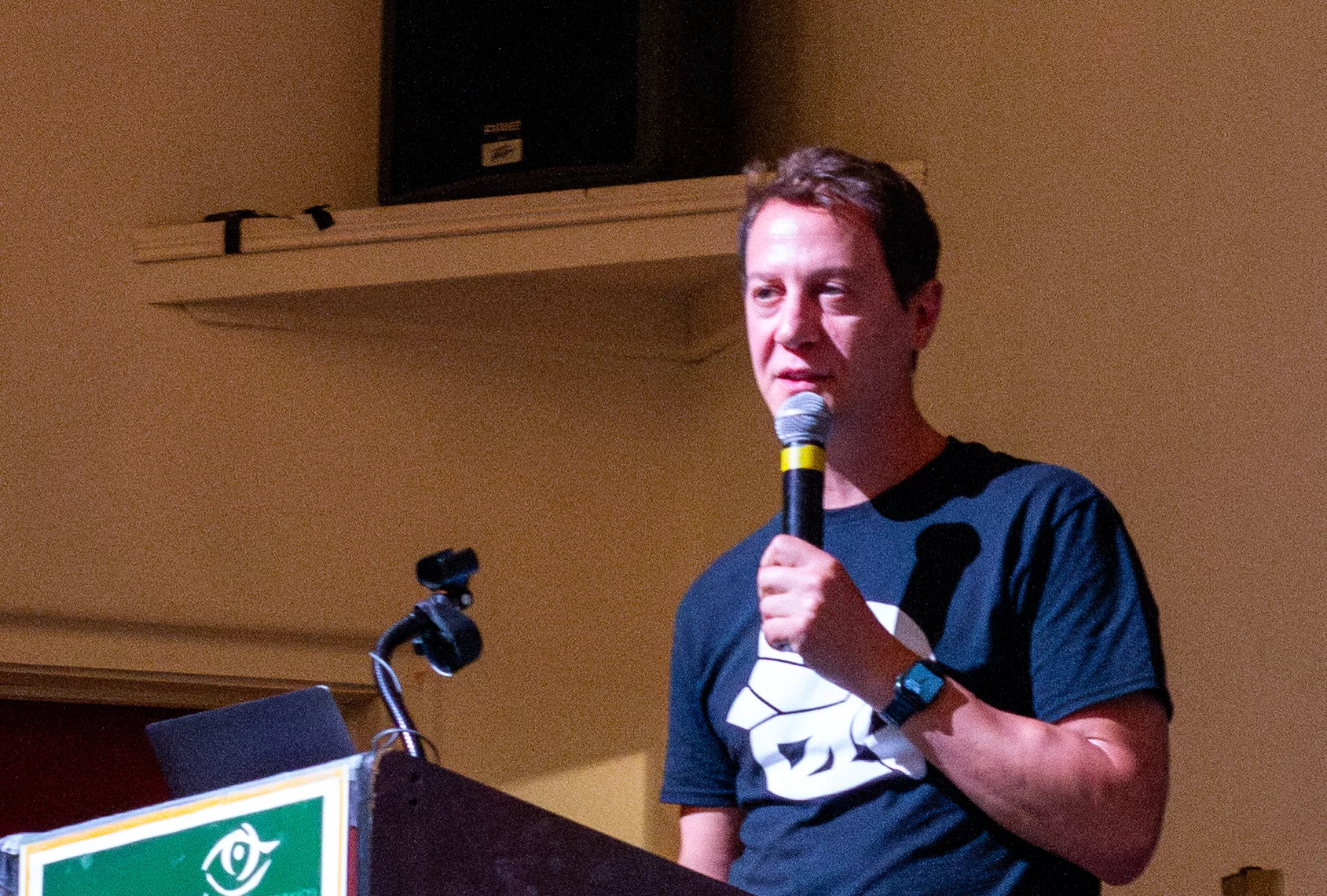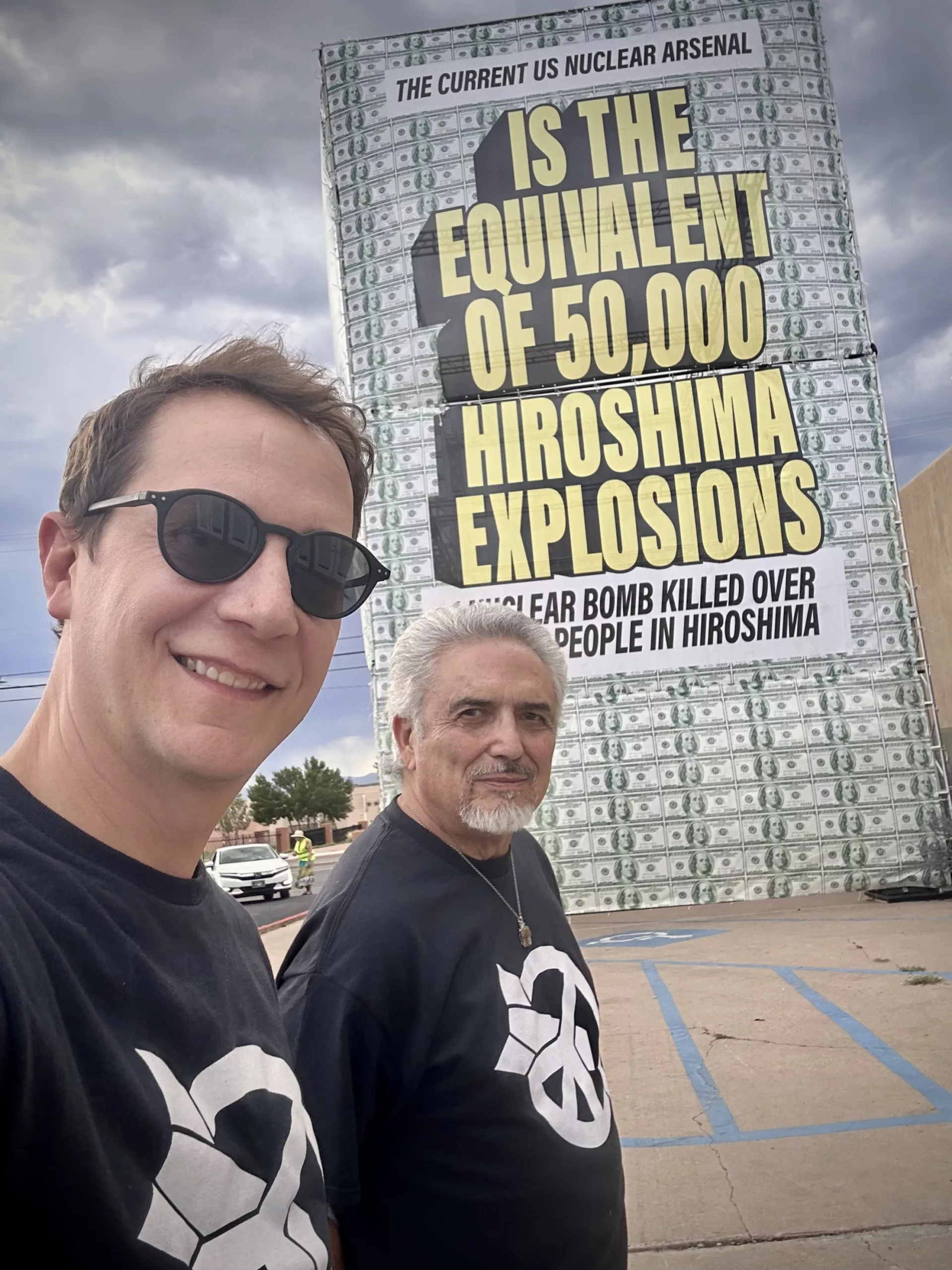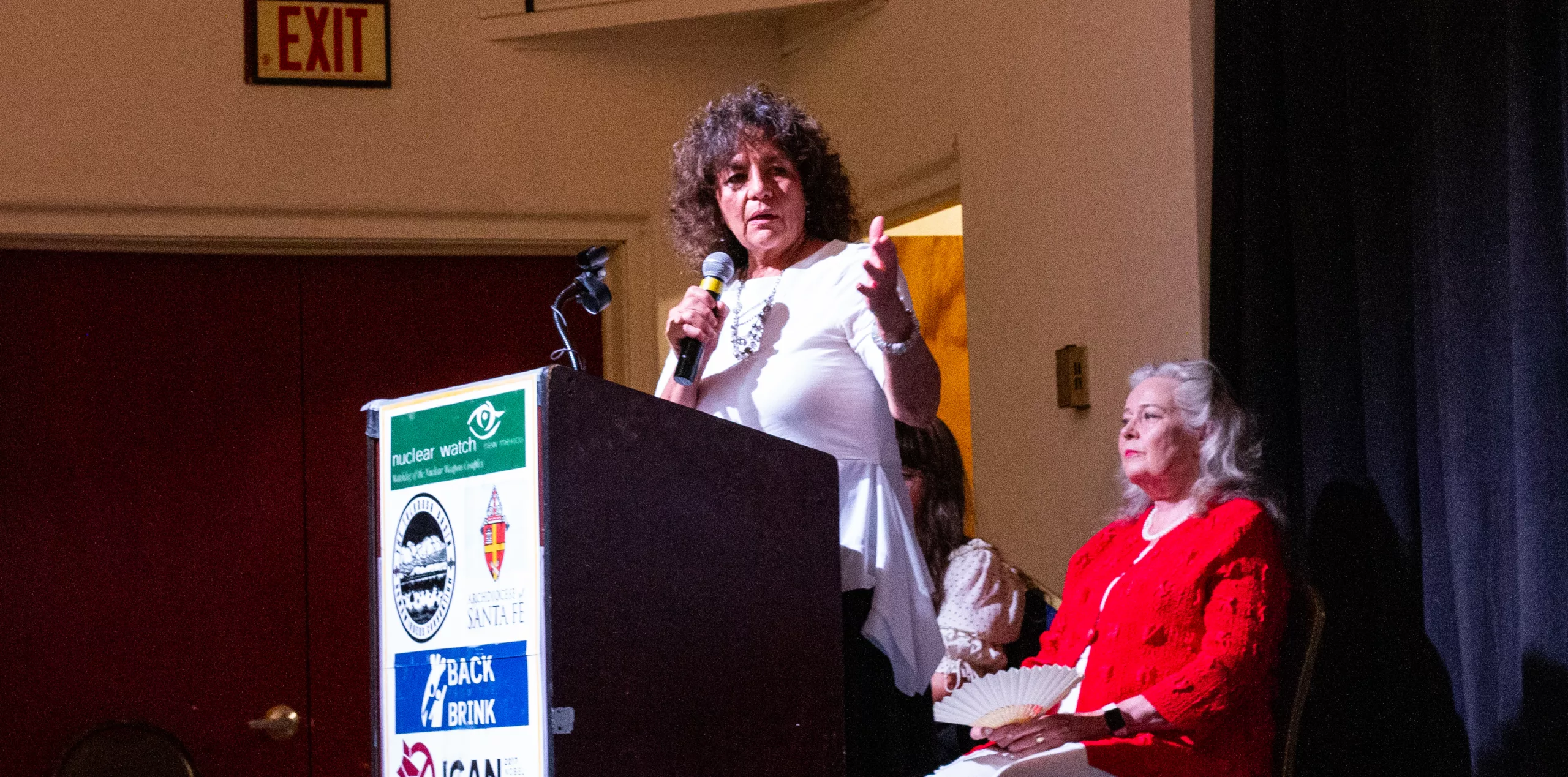80th Commemorations of Ban the Bomb – Trinity, Hiroshima & Nagasaki Remembrances in New Mexico
Exchange Monitor: DNFSB makes agency fixes, but needs members, GAO finds
The Defense Nuclear Facilities Safety Board (DNFSB) has tackled all but a few third-party recommendations to improve its culture over the past decade but suffers from a depleted board, according to a new report.
By ExchangeMonitor | September 5, 2025 santafenewmexican.com
Progress is tough with the five-person board probably…
COMMUNITIES FOR CLEAN WATER: LANL Radioactive Tritium Venting Fails to Provide Transparency, Assurance, and Respect for Local Communities
FOR IMMEDIATE RELEASE: September 18, 2025
Santa Fe, NM — As NNSA and LANL continue operations to depressurize Flanged Tritium Waste Containers, Communities for Clean Water (CCW) calls out federal agencies for issuing vague assurances instead of transparent, verifiable data — and for dismissing community concerns with contradictory and incomplete statements that disregard what independent experts have found, the Department of Energy’s (DOE) own legal obligations, and the New Mexico Environment Department’s (NMED) acknowledgment that LANL has a long record of compliance failures.
“How can our communities be expected to trust LANL when they won’t give us access to the raw, real-time monitoring data – independently verified by the EPA,” asks Joni Arends with Concerned Citizens for Nuclear Safety. “Without this transparency, LANL is continuing a legacy of empty assurances, not accountability.”
Key Concerns:
-
Lack of real-time transparency – Since Friday (Sept. 12), the public has been forced to rely on NMED’s Facebook page for piecemeal updates. While LANL’s website provides very brief daily summaries, no near-real-time monitoring dashboard from DOE, NNSA, or LANL has been made available.
-
Vague assurances, not real information – NNSA’s updates claim “no tritium was released” while simultaneously telling the public to expect “very low levels of tritium” for subsequent venting. Without numbers, monitoring data, or detection thresholds, these phrases do not provide reassurance.
-
Weather risks – LANL has not disclosed thresholds for wind, rain, or humidity that would postpone venting. Communities watch weather shifts in real time but are left in the dark about how safety decisions are being made.
-
Dismissal of public health concerns – When asked for plain-language guidance that NMED stated LANL would provide, LANL responded only with “no offsite impact anticipated.” This is not meaningful and reassuring guidance, it’s a blanket dismissal that disregards independent expert findings and fails to meet DOE’s obligations to protect vulnerable populations.
-
Ignoring daily lifeways – Avoiding Pueblo Feast Days is not enough. This is harvest season, when outdoor cultural events, youth programs, and farming are in full swing. LANL’s scheduling continues to disregard these realities.
Unanswered Questions
Independent experts and community advocates have raised critical unanswered questions:
-
Unclear “depressurization” – LANL said “no internal pressure was found” in a container, but also claimed it was “depressurized.” If no pressure existed, what was released?
-
Unanswered helium questions – NMED stated helium was released, but LANL has not explained its origin. Was it introduced at sealing of the outer container, or a decay product of tritium?
-
Monitoring limits undisclosed – LANL has not disclosed the detection limits of its monitoring equipment. Readings “indistinguishable from zero” could still mask releases.
DOE NNSA Gives Misleading Statements on Native America Calling
On a recent Native America Calling program, DOE NNSA’s Los Alamos Field Office Deputy Director Pat Moss compared LANL venting to global natural tritium stocks. Independent expert Dr. Arjun Makhijani pointed out this comparison as misleading: “The problem is not global background, but local contamination. If venting occurs in rain and calm winds, local rainfall could exceed U.S. drinking water standards by hundreds to thousands of times.”
In their most recent public meeting, LANL admitted that infants could receive three times the radiation dose as adults. During the interview, Dr. Makhijani pressed this point – if adults are modeled at 6 mrem, that means infants could be at 18 mrem, nearly double the EPA’s 10 mrem compliance limit. Instead of addressing this directly, Mr. Moss provided a stock line, “We will be compliant with the regulatorily imposed release threshold and will be doing the calculations per the regulation.”
That is exactly the problem – hiding behind regulatory caps while ignoring clear evidence that infants, our most vulnerable, face exposures above legal limits.
DOE NNSA also pointed to the Defense Nuclear Facilities Safety Board (DNFSB) – an independent federal oversight body created by Congress – as if it had declared the tritium venting operation as “fully protective of the public”. That is misleading. First, the DNFSB has been operating without a quorum for months, limiting its ability to issue independent recommendations. Second, what the Board staff said in its July 2025 presentation was that the overall nuclear safety risk to the public is low if DOE’s proposed controls are followed. The DNFSB has also flagged ongoing safety concerns at LANL including deficiencies in Area G’s safety analysis and risk to workers.
First of four containers of tritium waste at LANL has been vented
The first of four flanged tritium waste containers awaiting removal from Los Alamos National Laboratory has been vented, the New Mexico Environment Department announced Tuesday afternoon.
By Alaina Mencinger amencinger@sfnewmexican.com | September 16, 2025 santafenewmexican.com
The container can now be moved for treatment at LANL and then, eventually, to an off-site disposal area.
No internal pressure was found in the first container, according to the National Nuclear Security Administration, suggesting the inner containers in the flanged tritium waste container hadn’t leaked. Air monitoring did not show an increase of tritium beyond background levels, the federal agency wrote.
No tritium emissions were released, the Environment Department wrote in its Tuesday post on X, formerly Twitter. Both the state agency and the U.S. Environmental Protection Agency are monitoring the process.
The depressurization of the containers is set to continue at 7 a.m. Wednesday, although the NNSA noted the schedule is subject to change due to weather. The four containers will be vented one at a time over an estimated two-week period.
*The featured image differs from the article photo due to usage rights.
New Mexicans Can Save the DNFSB; Contact Our Senators Today
From our friends at Concerned Citizens for Nuclear Safety:
The independent Defense Nuclear Facilities Safety Board has been dwindling from a five-member board to one member and may disappear if we, the People, do not raise our voices to support its essential nuclear safety work. The Safety Board needs at least two new members. And that needs to get done by Saturday, October 18th. https://www.dnfsb.gov/about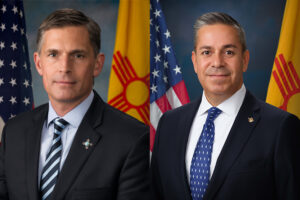
New Mexico U.S. Senators Heinrich and Lujan have key roles to play to ensure the Safety Board’s work continues unimpeded. https://www.heinrich.senate.gov/ and https://www.lujan.senate.gov/ Our voices of support are essential to ensure communities continue to receive the essential services of the Safety Board and its staff.
Right now members of the Safety Board’s staff are monitoring the venting of radioactive tritium from Area G at Los Alamos National Laboratory (LANL). Their expertise in the field of nuclear safety and their demonstrated competence and knowledge relevant to their independent investigative and oversight functions are an essential part of the process. They will be part of the follow-up once the venting of the four flanged tritium waste containers is completed. https://tewawomenunited.org/?s=tritium, https://www.ccwnewmexico.org/tritium, https://nuclearactive.org/
Not only does the Safety Board have staff at LANL, but also at Sandia National Laboratories in Albuquerque and at the Waste Isolation Pilot Plant, the burial site for plutonium contaminated nuclear weapons waste, near Carlsbad. https://ananuclear.org/facilities/
Holy See tells nations at UN to end threat of nuclear weapons, even as deterrence
Amid a global arms race, ending the threat of nuclear war — and even the testing of nuclear weapons — is imperative, said the Holy See’s diplomat to the United Nations.
By Gina Christian, OSV News | September 8, 2025 catholicreview.org
Archbishop Gabriele G. Caccia, the Holy See’s U.N. permanent observer, shared his thoughts in a statement he delivered Sept. 4 at U.N. headquarters in New York, during the General Assembly High-level Plenary Meeting to Commemorate and Promote the International Day Against Nuclear Tests, observed that same day.
“The pursuit of a world free of nuclear weapons is not only a matter of strategic and vital necessity, but also a profound moral responsibility,” Archbishop Caccia in his remarks.
He pointed to the introduction of nuclear weapons — first detonated by the U.S. in 1945 over the Japanese cities of Hiroshima and Nagasaki, killing an estimated 110,000 to 210,000 people, during World War II — as unveiling to the world “an unprecedented destructive force.”
Historic peace vigil partially dismantled after Trump orders: ‘Take it down’
Law enforcement officials on Sunday removed parts of the White House Peace Vigil, which has sat just outside the White House for decades.
By Marissa J. Lang, The Washington Post | September 8, 2025 washingtonpost.com
But over the past week, it faced a new threat as Trump turned his attention to the vigil and federal officers picked apart the structure that shields protesters and their signs from the elements. The vigil is maintained by a rotating cast of volunteers who keep the protest going 24 hours a day, seven days a week.
On Friday, Brian Glenn, a correspondent for the conservative network Real America’s Voice, told the president during a gathering with reporters that there was “a blue tent” in front of the White House that was “an eyesore.” Trump initially said he was unaware of it, but he then quickly ordered its removal.
Photo by Sig. Chiocciola, Creative Commons: The White House Peace Vigil on March 30, 2025 staffed by volunteers, Philipos Melaku-Bello (left) and Joe Brown (right).
For 80 years, nuclear weapons have been the unused threat
Amid a global arms race, ending the threat of nuclear war — and even the testing of nuclear weapons — is imperative, said the Holy See’s diplomat to the United Nations.
By Matt Kelly, mkelly@virginia.edu, September 3, 2025 news.virginia.edu
In the 80 years since World War II, which ended with the use of two atomic bombs, the world has maintained a tenuous relationship with nuclear weapons.
Philip Potter, professor of public policy at the University of Virginia’s Frank Batten School of Leadership and Public Policy and director of the National Security Data and Policy Institute, said he worries about the current delicate nuclear balance.
“Eighty years of non-use is the product of both good diplomacy and a recognition of the potential consequences,” Potter said. “The fearsome power of nuclear weapons causes countries pause before they use them, but a great deal of work has also gone into nonproliferation and the management of crises to keep them away from the nuclear brink. In some ways the dynamics of the Cold War made managing the potential for nuclear confrontation easier.”
It’s a very different strategic scenario now, where there are nine nuclear powers and less capacity to manage them.
A House of Dynamite review – Kathryn Bigelow’s nuclear endgame thriller is a terrifying, white-knuckle comeback
★★★★★: Amid a global arms race, ending the threat of nuclear war — and even the testing of nuclear weapons — is imperative, said the Holy See’s diplomat to the United Nations.
By Peter Bradshaw, The Guardian | September 2, 2025 theguardian.com
Kathryn Bigelow has reopened the subject that we all tacitly agree not to discuss or imagine, in the movies or anywhere else: the subject of an actual nuclear strike. It’s the subject which tests narrative forms and thinkability levels.
Maybe this is why we prefer to see it as something for absurdism and satire – a way of not staring into the sun – to remember Kubrick’s (brilliant) black comedy Dr Strangelove, with no fighting in the war room etc, rather than Lumet’s deadly serious Fail Safe.
NEW UPDATED INFORMATION: MUST READ!!! PROVIDED BY: THE TULAROSA BASIN DOWNWINDERS CONSORTIUM — WHAT TO KNOW ABOUT THE COMPENSATION AVAILABLE THROUGH THE RECA PROGRAM
 SEEKING JUSTICE FOR THE UNKNOWING, UNWILLING, AND UNCOMPENSATED INNOCENT VICTIMS OF THE JULY 16, 1945 TRINITY BOMB
SEEKING JUSTICE FOR THE UNKNOWING, UNWILLING, AND UNCOMPENSATED INNOCENT VICTIMS OF THE JULY 16, 1945 TRINITY BOMB
A Message From Tina
The DOJ is now accepting claims and has provided guidance on the claims process. They will only accept mail in claims at this time. They have indicated that an electronic process will be implemented by the end of the year. For more information you can go to the DOJ website at: https://www.justice.gov/civil/reca
Please be careful when supplying documentation via the regular mail. If you decide to file this way you may want to send the documents via certified mail. Once the electronic process begins it will be easier to assure that your documents are safe and being handled properly with little to no risk.
There are organizations/attorneys who are soliciting people to file claims with them. They use all sorts of tactics to get people to believe their services are necessary and often guarantee results. Please be aware that if an entity files a RECA claim on your behalf they will charge a fee. They receive the check, deduct their fee, and then pay you.
There will be Radiation Exposure Screening and Education Program (RESEP) clinics in our State that will assist people with claims. The claims process is not necessarily difficult and we’ll be training people to assist with the application process when needed. We’ll also be looking to government agencies to cooperate in locating necessary documentation for the application process. PLEASE DO NOT TURN OVER YOUR RECORDS TO ANYONE THAT YOU ARE NOT SURE ABOUT. You can remain updated about the application process, the training we’re going to organize or other questions you might have by going to our website at: www.trinitydownwinders.com
What does the expansion of RECA do?
The Radiation Exposure Compensation Act program has been re-authorized and extended through Dec 31, 2028 but the application deadline is Dec 31, 2027.
Downwinders who lived in New Mexico for one year from 1944 through Nov. 1962 will be eligible and family members can apply on behalf of a deceased loved one.
There are 19 cancers that are covered by the expansion.
The cancers covered are:
Leukemia (except chronic lymphocytic Leukemia); Lymphoma (other than Hodgkins); Primary cancers of the Thyroid, Breast, Esophagus, Stomach, Pharynx, Small Intestine, Pancreas, Bile Duct, Gall Bladder, Salivary Gland, Urinary, Bladder, Brain, Colon, Ovary, Liver (unless cirrhosis/Hepatitis B present), and Lung.
Compensation for downwinders will be increased to $100,000 and Downwind coverage is expanded to cover the entire state of New Mexico
Coverage for uranium miners and workers would be expanded:
To workers through Dec 31, 1990
To core drillers and remediation workers
To cover additional kidney disease for uranium miners
To allow for combined work histories
What does this mean?
This is the biggest expansion of RECA in the history of the program and it wouldn’t have happened without the tireless advocacy of Senator Lujan, Representative Leger Fernandez, Senator Heinrich, Representative Stansbury and Representative Vasquez.
While it is a significant win, it still leaves out many impacted communities, including the parts of Nevada and Arizona not previously covered, along with Montana, Colorado, and Guam.
The 2-year extension will likely not be adequate time to get all the people in New Mexico who qualify enrolled and this bill does not have health care benefits for Downwinders. We will continue to fight for a longer extension and the addition of healthcare benefits. This is an important first step because it reinstates the program keeping it operational so people can continue to apply for benefits and get the help they need, and it shows that expansion is possible and provides an opportunity to address concerns raised about the cost of expansion.
We are grateful for the win and consider this a big step in the right direction. We look forward to the day that claims are successfully filed and the people of New Mexico begin to see the benefit of the expansion of RECA. Stay tuned for updates and many thanks to all of you who have stood together with us in this fight!Continue reading
Threads cast and crew suffered ‘trauma’ after film
The creators of a documentary about the making of nuclear apocalypse film Threads say many of the cast and crew had “suffered with the trauma of being involved”.
By Chloe Aslett, BBC News | August 29, 2025 bbc.com
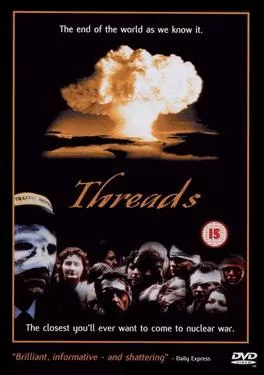
Threads, which tracks the aftermath of a nuclear attack on Sheffield, was first screened on the BBC on 23 September 1984 and fast became a cult classic.
Now filmmakers Craig Ian Mann and Rob Nevitt have spoken to more than 50 people involved in the making of the film for their documentary Survivors: The Spectre of Threads.
Mr Mann said: “[Threads] is a film that more than any I can think of everybody who worked on it it has impacted their lives in some way or another. Sometimes very positively and sometimes somewhat negatively.”
“There are people who have suffered the trauma of having been in and seen Threads,” he told BBC Radio Sheffield.
“There’s one participant in the documentary who has become a Doomsday prepper.
“He lives in America and has a bunker and canned food and weapons and he is prepared for the end of the world at any moment and that’s because he was in and saw Threads.”
Trump wants to stop nuclear proliferation. STRATCOM could play a major role.
Henry Sokolski, executive director of the Nonproliferation Policy Education Center, argues that the US needs to carry a new “big stick.”
By Henry Sokolski, Breaking Defense | August 29, 2025 breakingdefense.com

Last Monday, President Donald Trump pronounced, “We can’t let nuclear weapons proliferate.” Two days later, Secretary of State Rubio met with International Atomic Energy Agency (IAEA) Director General Rafael Mariano Grossi and recommitted the United States to preventing the proliferation of nuclear weapons.
After America’s bombing of Iran’s suspect nuclear sites, there’s cause to take these commitments seriously, but only if it’s more than a one off.
Emphasizing consistency is essential. Historically, America has backed nonproliferation in fits and starts. Under Presidents Gerald Ford and Jimmy Carter, the United States opposed the recycling of plutonium for commercial use because it was too close to bombmaking. It blocked reprocessing activities in South Korea, Taiwan, and Brazil.
Full Event Recording: Press Conference & Commemoration – Hiroshima Atomic Bombing 80th Anniversary Event (August 6, 2025)
DOE and LANL Silence Public and Tribal Community Member Voices While Pushing Radioactive Tritium Venting
For Immediate Release: August 22, 2025
Contact: Kalyn Mae Finnell, Coordinator, Communities for Clean Water
Los Alamos, NM — This week’s so-called “public meeting” regarding Los Alamos National Laboratory’s (LANL) proposal to vent radioactive tritium emphasized the persistence of the Department of Energy (DOE) National Nuclear Security Administration (NNSA) and LANL to disregard communities concerns while prioritizing nuclear weapons projects.
In-person attendees were allotted three minutes to make statements about their concerns. Over 100 online participants—including many Pueblo community members who could not attend the meeting in Los Alamos in-person due to health, distance, or work commitments—were surprised to find that they were not permitted to provide verbal comments and restricted to submitting only one emailed question. DOE/NNSA and LANL gave no prior notice of this change. “This is not meaningful participation. It is exclusion,” said Marissa Naranjo with Honor Our Pueblo Existence.
The stakes are at an all time high. Tritium — produced in the development of nuclear weapons as triated water — is a radioactive isotope of hydrogen that travels quickly through air, water, soil, and food. When exposed to the human body, it can cause cancer, genetic damage, cross the placental barrier, and cause health impacts across generations. DOE/NNSA insists venting is the sole safe option moving forward—however, their own “independent” technical review revealed significant issues with this assertion. The review acknowledged significant deficiencies: the absence of real-time monitoring, a lack of container-specific risk analysis, and insufficient examination of safer alternatives such as filtration or storage until decay occurs. Community members are also asking: How can a review be independent when DOE managed the process, designated the reviewer, and defined the scope? This does not represent independence—it signifies a conflict of interest.
“This is the same broken pattern we’ve seen for decades,” said Joni Arends with Concerned Citizens for Nuclear Safety. “LANL creates the danger, then tells us radioactive releases are our only option. They force the public and Pueblo communities into what NMED itself has called ‘untenable situations.'”
Local community leaders also noted that DOE has consistently overlooked reports by Tewa Women United, Communities for Clean Water, and scientific experts regarding the risks associated with tritium. These technical reports documented exposure pathways unique to Pueblo communities, including impacts on women, children, and traditional farming lifeways. By sidelining this research, DOE has once again dismissed Indigenous voices and lived experiences—further diminishing trust and perpetuating environmental racism.
“If our gathering here today is to mean anything, it must mean that in fidelity to all those whose lives were destroyed or savagely damaged on August 6, 80 years ago, we refuse to live in such a world of nuclear proliferation and risk-taking. We will resist, we will organize, we will pray, we will not cease, until the world’s nuclear arsenals have been destroyed.”
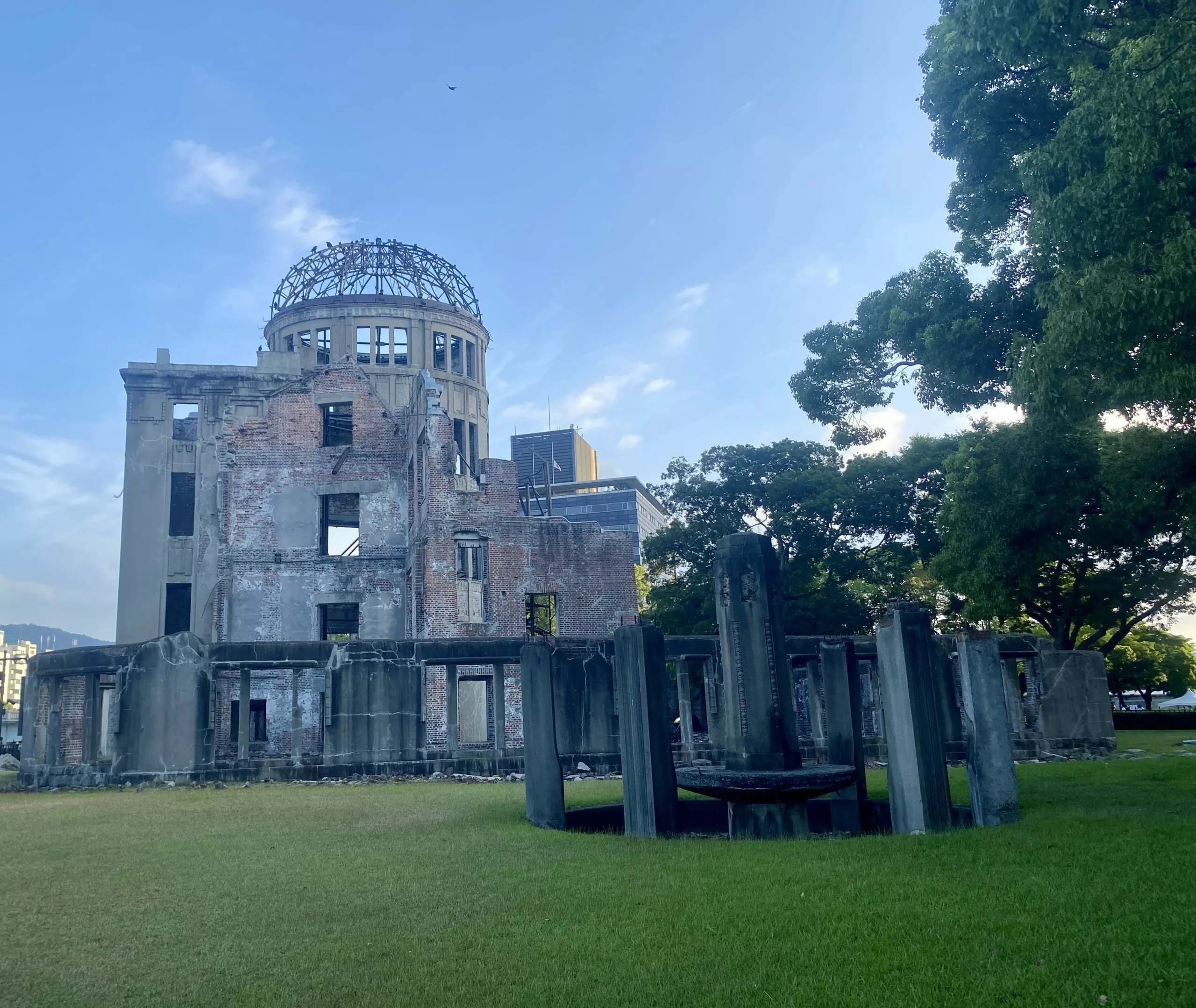 — Cardinal Bob McElroy of Washington, DC, August 5, 2025, at the World Peace Memorial Cathedral in Hiroshima, Japan.
— Cardinal Bob McElroy of Washington, DC, August 5, 2025, at the World Peace Memorial Cathedral in Hiroshima, Japan.
Nuclear Weapons Issues & The Accelerating Arms Race: August 2025
Nuclear Weapons Budget:
• NNSA’s detailed budget was finally released, the latest ever. $2.8 billion is for “plutonium modernization” (i.e., pit production) projects, of which $1.8 billion for LANL. The Lab’s nuclear weapons programs are having a full billion dollars added to them for FY 2026 (which begins this October 1) on top of the $4 billion they already have. The Lab’s $6 billion FY 2026 budget is now 84% nuclear weapons. Meanwhile cleanup and nonproliferation programs are being cut by 5% and renewable energy research completely eliminated.
• Over for the next four years the “reconciliation” bill adds another $750 million for plutonium modernization (mostly at SRS) and $1 billion “to accelerate the construction of National Nuclear Security Administration facilities.”Continue reading
August 6th U.S. Atomic Bombing of Hiroshima Commemoration in Santa Fe
Eighty Years Later, it is Beyond Time to Get Rid of Nuclear Weapons.
Last week on August 6, 2025, the 80th anniversary of the U.S. atomic bombing of Hiroshima, community members gathered at the Center for Progress and Justice on Cerrillos Road in Santa Fe to honor the solemn occasion and demand an end to the ongoing nuclear weapons harm and destruction that first began here in New Mexico.
The event was organized by Nuclear Watch New Mexico in collaboration with the Up in Arms campaign by Ben Cohen, co-founder of Ben & Jerry's, to reduce military and nuclear weapons spending, the International Campaign to Abolish Nuclear Weapons (winners of the 2017 Nobel Peace Prize), the Santa Fe Archdiocese, the Back from the Brink New Mexico Hub, and the Tularosa Basin Downwinders Consortium. It centered around a massive public art installation from Up in Arms of a towering cubic structure framed by messages on top of images of $100 bills. The structure is sized to literally hold $100 billion of those bills, respresenting what the U.S. spends every year on nuclear weapons (the total cost of nuclear weapons "modernization" is up to $2 trillion). Visible to thousands of drivers each day, the large installation pressures viewers to reckon with the scale of this cost and to imagine what else those resources could make possible. A prominent message on one of the four sides quotes the president in saying, "'We don't need to build brand new ones. We already have so many,' — Donald Trump" and below it, "His budget includes a down payment of $2 trillion of nuclear weapons." Another side reads, "The current U.S. nuclear arsenal is the equivalent of 50,00 Hiroshima explosions. One nuclear bomb killed over 100,000 people in Hiroshima."
The installation will remain on display for the foreseeable future, GO SEE IT NOW! 1420 Cerrillos Road, Santa Fe, NM 87505.
During the event, speakers Archbishop John C. Wester (by video from Japan), Tina Cordova of the Tularosa Basin Downwinders, Sophie Stroud from Nuclear Watch New Mexico, Anne Pierce-Jones from Back from the Brink, Ben Cohen representing Up in Arms, and Seth Shelden from ICAN all gave concrete steps and actions that concerned citizens can take to help promote a safer world. The speakers were presented by former Santa Fe County Commissioner Anna Hansen, who stated, “Disarmament is the only answer. I have spent my life working to end the nuclear cycle, as many have, and most of us in this room have never known a world without nuclear weapons.”
Speakers drew connections between the devastation in Hiroshima and the continued production of plutonium pits at LANL. At Los Alamos National Lab alone, five billion dollars will be poured into nuclear weapons programs in Fiscal Year 2026, starting this October. One billion dollars was added to last year’s budget, which includes a 42% increase for nuclear warheads. At the same time, nonproliferation programs are being cut, the science budget sliced in half, and funds for renewable energy zeroed out and gone completely. The push for "modernization" of the US’s nuclear arsenal is directly linked to plutonium pit production at Los Alamos, specifically expanding plutonium pit production. LANL will receive $1.7 billion in direct costs for pit production in 2026. Add in the indirect costs, and it’s roughly double that. All of this future pit production is exorbitantly expensive, yet the National Nuclear Security Administration still has no credible cost estimate for these plans.
WHAT YOU NEED TO KNOW: New plutonium pits are not needed to maintain the existing stockpile - it is all for future, new designs. And these new weapons cannot be tested because of the testing moratorium - or conversely could pressure the US to resume testing. In 2006, independent experts concluded that existing plutonium pits last at least a century. Their average age now is about 43 years. A new pit aging study is expected this year. Expansion plans should stop until then.
The U.S.’s $2 trillion “modernization” program is a plan to keep nuclear weapons forever. It is claimed to be essential for “deterrence.” But deterrence relies upon the flawed assumption that all actors will behave rationally, and that accidents or miscalculations will never occur. History says otherwise. Moreover, the U.S. and Russia have always rejected minimal deterrence in favor of nuclear warfighting capabilities that could end civilization overnight. That is why we have 1,000s of nuclear weapons and are funneling billions of dollars into mass death machines, even though everybody knows that a nuclear war must never be fought and can never be won.
See more on the myth of deterrance here:
Deterrence is the Threat: NukeWatch Presentation for Western New Mexico University – April 1, 2025
Media coverage of the event includes the Santa Fe New Mexican articles below:
New Mexico reckons with its role in Japan’s atomic devastation on 80th anniversary of Hiroshima
‘End the nuclear cycle’: Antinuclear New Mexicans speak out 80 years after Hiroshima bombing
View the full event recording - Click HERE or below:
Nobel Peace Conference: A Message to Humanity – Featuring a Video with Nuclear Watch New Mexico on Our Plutonium Pit Federal Lawsuit to Show What Citizen Action on the Legal Front Can Accomplish for Nuclear Disarmament
The video above shows the entire conference (but begins playing at our portion); to view our video alone on YouTube CLICK HERE or watch below!
Santa Fe New Mexican MY VIEW – 80 years on: The immorality of nuclear weapons
By John C. Wester, SANTA FE NEW MEXICAN | August 5, 2024 santafenewmexican.com
Greetings New Mexicans. The lord’s blessings upon you. I am writing to you from Hiroshima, Japan, on the 80th anniversary of its horrific atomic bombing. All wars are against Christ’s teachings. Two wrongs (including Japanese atrocities in World War II) never make a right.
I am here with Cardinal Blase Cupich of Chicago, Cardinal Robert McElroy of Washington, D.C., Archbishop Paul Etienne of Seattle and our brother Japanese bishops to commemorate the dead and to honor the living Hibakusha (the aging atomic survivors). We especially congratulate the Hibakusha organization, Nihon Hidankyo, for winning the 2024 Nobel Peace Prize.Continue reading
‘End the nuclear cycle’: Antinuclear New Mexicans speak out 80 years after Hiroshima bombing
Organized by Nuclear Watch New Mexico, the event featured speakers from the international campaign — which won the Nobel Peace Prize in 2017 — the Back from the Brink New Mexico Hub and the Tularosa Basin Downwinders Consortium, a group that advocates for “downwinders” in New Mexico who say they were sickened by fallout from the 1945 Trinity Test southeast of Socorro.
By Cormac Dodd cdodd@sfnewmexican.com, The Santa Fe New Mexican | August 6, 2025 santafenewmexican.com
The face of Archbishop John C. Wester played over the screen as the Catholic leader, on the same day surreal moments of horror unfolded during the bombing of Hiroshima 80 years ago, pleaded for nuclear disarmament.
“Do we pull back from the brink and choose life, or do we continue to play with fire, hoping our luck will hold out?” the leader of the Archdiocese of Santa Fe said in a video, recently recorded before he traveled to Japan with a delegation of U.S. bishops.
Wester has made antinuclear advocacy a central part of his tenure since he was appointed to the post in 2015. A group of about 50 people entered the Center for Progress and Justice on Cerrillos Road on Wednesday evening to commemorate the nuclear bombing of Hiroshima and Nagasaki toward the end of World War II.
New Mexico reckons with its role in Japan’s atomic devastation on 80th anniversary of Hiroshima
At a Wednesday evening event organized by Nuclear Watch New Mexico, Archbishop John C. Wester of the Archdiocese of Santa Fe, long an outspoken advocate of nuclear disarmament, is set to celebrate Mass in Japan for victims with some other U.S. Catholic bishops and will participate in commemoration services. The event will be played by video at an event in Santa Fe.
By Cormac Dodd cdodd@sfnewmexican.com, The Santa Fe New Mexican | August 5, 2025 santafenewmexican.com
Wesley Burris remembers waking to a morning of potent, white light and panic as the planet’s first atomic bomb went off in a test in the Jornada del Muerto desert near his family’s Southern New Mexico home in July 1945.
He does not recall, however, hearing the news from Hiroshima and Nagasaki in Japan over the radio just weeks later. In fact, because the U.S. government did not tell his family what it was they saw that July, it was years before Burris realized how the Trinity Test he witnessed as a child served as a prelude to the world-altering bombings of Japan on Aug. 6 and Aug. 9, 1945.
Eighty years ago, the U.S. dropped a nuclear bomb on Hiroshima near the end of World War II, unleashing immediate death on a sweeping scale and rendering vast corridors in the southwestern Japanese city charred and fragmented, with buildings reduced to rubble with harrowing speed.
Santa Fe Archbishop Wester on RECA, Nuclear Weapons
80 years after nuclear bomb tested in N.M., victims will get reparations
NBC News NOW, July 16, 2025, nbcnewsnow.com
Trinity “downwinders” of New Mexico exposed to the first ever nuclear explosion are receiving recognition and compensation 80 years after the bomb was tested. NBC News’ Aaron Gilchrest spoke with several people who shared their sacrifice and suffering over the years.
An appreciation of Bob Alvarez, a fearless advocate for those harmed by the US nuclear weapons complex
By Michael Slater – The Bulletin of Atomic Scientists| July 10, 2025, thebulletin.org
SEE ALSO: THIS WONDERFUL TRIBUTE TO BOB ALVAREZ FROM BEYOND NUCLEAR & OTHERS: https://beyondnuclear.org/bob-alvarez-presente/
And view the Alliance for Nuclear Accountability’s Lifetime Achievement Awared given to Bob in 2022: https://ananuclear.org/bob-alvarez/
Nuclear Weapons Issues & The Accelerating Arms Race: June/July 2025
Nuclear Weapons Budget:
• The just passed “reconciliation” bill and Trump’s proposed FY 2026 budget are reverse Robin Hood iniatives, robbing from the poor to give to the rich. While Medicaid is gutted, there are huge tax breaks for the ultra-wealthy and a big bump up for nuclear weapons.
• The following is from the DC-based Center for Arms Control and Non-Proliferation (https://armscontrolcenter.org/fiscal-year-2026-defense-budget-request-briefing-book/):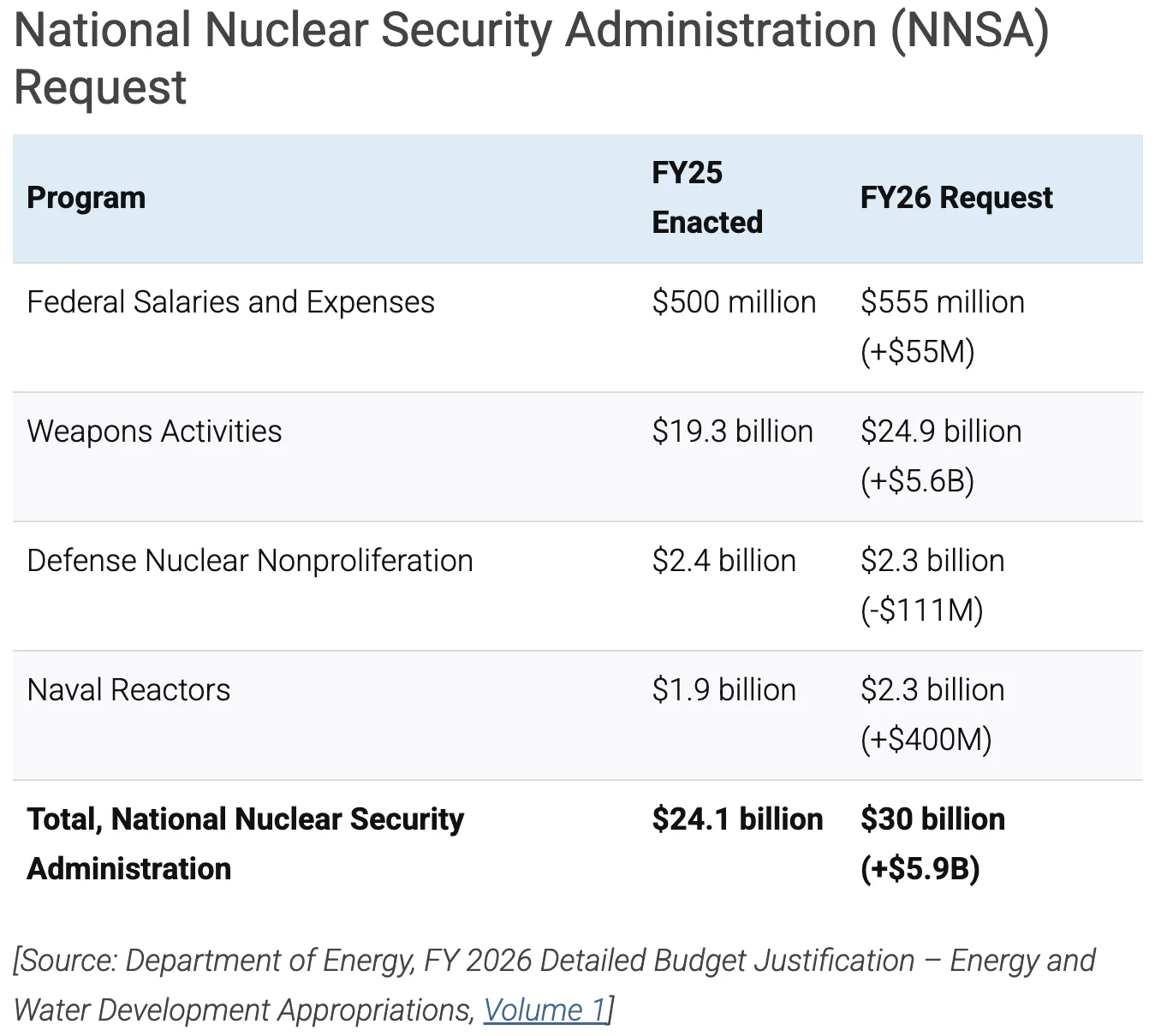
 Note: the + or – signs result from the “reconciliation” bill.
Note: the + or – signs result from the “reconciliation” bill.
• Radiation Exposure Compensation Act: Sen. Josh Hawley of MO got RECA extension and expansion attached to the bill, which is really something. Tina Cordova of the Tularosa Basin Downwinders Consortium has acknowledged that many deserving people have still been left out. See more: https://www.santafenewmexican.com/news/local_news/new-mexico-downwinders-celebrate-bittersweet-victory-in-trumps-big-beautiful-bill/article_9dc4ae5e-d4d0-4689-a255-a83576076963.html Finally, it is good for only two years because it was part of budget “reconciliation” that is supposed to deal only with funding matters (hence is limited to this 2-year term of Congress). We will continue to fight to get RECA permanently extended and expanded.
Nuclear Weapons Update:
The manufacture of new pits has more to do, as per the last Nuclear Posture Review (NPR), with preserving and “modernizing” the infrastructure than it does with the warheads themselves. This is in essence a huge continuing program of institutional preservation that guarantees large inflows of taxpayer dollars and corporate profits.
Further, we are talking about W87-1 pits for the new Sentinel intercontinental ballistic missile, which is already 80% over budget before the Air Force admitted it had to build new silos. Moreover, the reported production of ~800 plutonium pits when there are only to be 400 fielded Sentinels may lead to the uploading of multiple warheads per missile (AKA MIRVing for Multiple Independently-targeted Reentry Vehicles). This is regarded as deeply destabilizing since land-based ICBMs are known fixed targets which encourage pre-emptive strikes and/or use them or lose them scenarios.
Accelerating Arms Race
• The U.S. bombed Iranian hardened, deeply buried uranium enrichment sites with B2s carrying 30,000 lb. conventional bunker busters (32 hours roundtrip from Whiteman AFB in Missouri). The U.S. has rushed produced nuclear B61-13s for this kind of job.
Planned Nuclear Weapons Activities Increase to 84% of Lab’s Budget; All Other Programs Cut

The Department of Energy and Los Alamos National Laboratory have released the LANL congressional budget request for the upcoming fiscal year, 2026, which begins on October 1, 2025. The request shows a continued major increase and expansion of the plutonium pit production program (plutonium pits are the triggers of nuclear weapons). LANL is frantically trying to increase its capabilities to begin making 30 pits per year by 2028.
NukeWatch created the attached chart to give a visual of how taxpayer dollars are annually spent at the Lab. LANL’s FY 2026 total budget request is $6 billion, which is a 17% increase over the FY 2025 $5.2 billion total budget. This includes a 24% increase in the nuclear weapons budget over FY 2025.
Nuclear Weapons Activities represent 84% of LANL’s total budget.
Under the headline of “Unleashing a Golden Era of Energy Dominance and Energy Innovation and Protecting the Nation,” the nuclear weapons budget is increasing dramatically. As a baseline, 65% of the Department’s proposed $46 billion budget is earmarked for its semi-autonomous nuclear weapons agency, the National Nuclear Security Administration (NNSA). In turn, more than 80% of NNSA’s proposed FY 2026 funding is for its nuclear weapons research and production programs, with a 25% funding increase over FY 2025.
Due to so-called “reconciliation” funding, “Total Weapons Activities” increase to just under $30 billion. This adds up to a 53% increase above FY 2025 for the nuclear weapons research and production programs across the country. To help pay for this, national nonproliferation and cleanup programs are being cut by 5%, science by 14%, cybersecurity and emergency response by 25%, and energy efficiency and renewable energy programs by 74%.
NukeWatch in DC Lobbying for Nuclear Disarmament and Non-Proliferation
Your Nuclear Watch New Mexico team has just returned from a weeklong trip to Washington D.C. (we went so you don’t have to!). The Alliance for Nuclear Accountability (ANA) hosts an annual “DC Days” conference and following Spring Meeting, and we proudly joined as part of a record number of groups this year. Over 60 individuals from 30+ organizations journeyed to DC to lobby congress on nuclear weapons, energy, and waste policy on behalf of the frontline nuclear communities we represent. Members were present from groups representing the entire U.S. nuclear complex, including sites in Georgia, New Mexico, Tennessee, California, Missouri, Colorado, Idaho, Nevada and beyond. NukeWatch NM brought all three staff members—Jay Coghlan, Scott Kovac, and Sophia Stroud (whose participation was made possible by a youth scholarship from ANA)—to participate in DC Days and the subsequent two-day spring meeting. The ANA DC Days schedule included over 70 meetings with senators, representatives, and other relevant agencies, such as the Department of Energy, the Government Accountability Office, and the Defense Nuclear Facilities Safety Board. Our NukeWatch team attended nearly 30 of these meetings. The Alliance for Nuclear Accountability put together a new report to present our “asks” to congress as a coalition, including analysis and recommendations for nuclear weapons, nuclear waste, and nuclear energy policy and funding. Please click HERE for the full report, and HERE for a short summary.
I was glad to see increased representation from Nevada this year, and especially Indigenous representation. In light of the current administration’s attacks on Environmental Justice, it is more important than ever that ANA as a whole, as well as individual member groups, continue to prioritize uplifting Native American voices, not only because of their deep cultural, spiritual, and social connections to the land, including sacred sites and traditional knowledge essential to religious freedom and access, but also because of the violent legacy and ongoing reality of nuclear colonialism, in which Indigenous lands and peoples have been deliberately and disproportionately targeted in the nuclear industry with uranium mining, nuclear weapons testing and production, and the disposal of radioactive waste. To learn more about Nuclear Colonialism, see: www.networkadvocates.org/downwinders and read Nuclear Nuevo México: Colonialism and the Effects of the Nuclear Industrial Complex on Nuevomexicanos by Myrriah Gómez.
THE ATOMIC BOWL: Football at Ground Zero —and Nuclear Peril Today
First prize, Best Documentary Feature, International Uranium Film Festival, Rio de Janiero
Coming to PBS in July 2025. (53-minute and 27-minute versions).
There have been numerous films on The Bomb, even one or two about Nagasaki, but “The Atomic Bowl: Football at Ground Zero — and Nuclear Peril Today” is unique, and with many lessons and warnings for today–as nuclear dangers proliferate and civilian casualties in wars climb even higher.
This football showdown featured college and pro stars, on January 1, 1946, and in (of all places) Nagasaki, near ground zero for the second atomic bomb, which killed over 80,000 just a few weeks earlier. The film, narrated by Peter Coyote, is not only the first full first-hand account of the game, but a provocative and disturbing story of the decision to drop a second atomic bomb just three days after Hiroshima–and the dangerous message to today’s leaders. Nearly all of the victims of the “forgotten bomb” were women and children and other civilians.
This important film, which includes rare footage and dozens of never published photographs, then offers a convincing argument about the relevance of Nagasaki today as mass civilian casualties in wars surge and nuclear dangers by all estimates grow every year.
Its writer and director Greg Mitchell has been one of the world’s leading authorities on the atomic bombings for several decades, and his recent film, “Atomic Cover-up,” won several awards, including the top prize from the Organization of American Historians and was aired via PBS. His two other recent films, “The First Attack Ads” and the award-winning “Memorial Day Massacre,” also earned PBS distribution (as well as Emmy nods), and like “The Atomic Bowl” were produced by Academy Award nominee Lyn Goldfarb.
Victory! Proposed Tritium Venting by LANL Halted for Now Due to Community Pressure
Proposed Tritium Venting by Los Alamos National Lab Postponed Indefinitely after Community Pressure
THANK YOU to the over 2,500 of you who signed our Petition to Deny LANL’s Request to Release Radioactive Tritium into the Air!
A massive thank you as well to our fellow campaigners we worked alongside on this issue, Tewa Women United and Concerned Citizens for Nuclear Safety, and of course thank you as well to NMED Secretary Kenney for listening to our community.

From Tewa Women United:
Beloved Community, we have some really good news!
Our Environmental Justice team has finally received the response from the New Mexico Environmental Department regarding the LANL/DOE/NNSA request for temporary authorization to begin venting tritium this summer. The short story: **Secretary Kenney (NMED) says that NMED will not act on the temporary authorization request** until the following criteria is met:
1. independent technical review
2. public meeting
3. tribal consultation (in addition to NMED tribal consultation)
4. compliance audit
These criteria must be met and LANL/DOE/NNSA must submit an updated request before NMED will revisit and make a decision.
TELEVISION EVENT Trailer
Television Event is a documentary that follows the dramatic (and sometimes humorous) making and impact of the film The Day After. The 1983 film played a pivotal role in shifting public consciousness around nuclear weapons and, ultimately, President Reagan’s policies. It’s a reminder on the power of art and storytelling to create meaningful change.
The documentary was also reviewed in The New York Times: https://www.nytimes.com/2025/05/30/movies/the-day-after-documentary-television-event.html
More:
In 2023 a book was publishedd about the making of “The Day After”, read the review in Arms Control Today: https://www.armscontrol.org/act/2024-03/book-reviews/apocalypse-television-how-day-after-helped-end-cold-war
As well as: “‘The Day After’: The Arms Control Association’s Forgotten Role.” <https://www.armscontrol.org/act/2019-03/features/day-after-arms-control-associations-forgotten-role> It is a reminder that a few people can, with some luck and good timing, put big things into motion.
Full Recording: Second Scoping Hearing for NNSA’s Programmatic Environmental Impact Statement on Plutonium Pit Production
Operation Crossroads: “The World’s First Nuclear Disaster”
“With Trump back in office, the recurring question of the need for nuclear weapons testing has resurfaced in the national security debate. Project 2025’s directive that the US return to ‘immediate test readiness’ raises further alarm, given the primacy of that document in Trump’s circle. The general uncertainty around current U.S. nuclear posture gives added weight to the historical importance of the atmospheric and underwater nuclear weapons tests conducted on the Bikini Atoll, recounted here by one of the leading advocates for public safety in the nuclear age. —Ed.”
By Robert Alvarez | Washington Spectator, National Security | May 29, 2025, washingtonspectator.com
Beginning in the late 1970’s, I was working for the Environmental Policy Institute around the time when atomic veterans started to descend on the nation’s capital. I would arrange meetings with Congressional offices, and the offices of both the Defense Nuclear Agency and Veterans Affairs, to enable the veterans to share their experiences and seek justice for being sent in harm’s way. About 250,000 soldiers, sailors, Marines, Coast Guard men, and airmen took part in atmospheric nuclear weapons tests from 1945 to 1963.
John Smitherman and Anthony Guarisco were 17- and 18-year-old sailors, respectively, in July of 1946, when they took part in “Operation Crossroads”—the first two nuclear weapons tests following World War II. These tests were conducted on the Bikini Atoll of the Marshall Islands and codenamed “Able” and “Baker.”
As a result of this extraordinary indifference to lethal danger, some 200 U.S. Navy ships were contaminated, and ships carrying radioactive fallout subsequently sailed to home ports in California. These ports are still being cleaned up today, nearly 80 years later. Glenn Seaborg, the chairman of the Atomic Energy Commission from 1961 to 1971, described the Baker test as “the world’s first nuclear disaster.”
Anthony and John were part of the U.S. Navy’s Pacific fleet involving 40,000 service men and 2,000 civilians. They along with others swam in the heavily contaminated Bikini Lagoon. When I met them in 1980, John was suffering from lymphatic cancer and Anthony from a severe form of spinal arthritis.
In March 1983, Anthony and his wife Mary showed up at my cluttered office and ceremoniously handed me a large stack of documents. They had just visited the UCLA library in Los Angeles and found boxes of forgotten, declassified documents belonging to Dr. Stafford Warren, the chief safety officer during both the Manhattan Project and the 1946 Crossroads tests.
Full Recording: First Scoping Hearing for NNSA’s Programmatic Environmental Impact Statement on Plutonium Pit Production
NEW Report on Plutonium Pit Production from the Union of Concerned Scientists
Today, UCS is releasing a comprehensive report on plutonium pit production. It includes a technical assessment of plutonium aging, a critical look at the weapons programs that new pits are slated for, and suggestions for alternatives, including pit re-use.
The final chapter of the study is on the human and environmental impacts of pit production and is intended as a tool for local advocacy groups to deepen their own work around issues such as the programmatic environmental impact survey that has just kicked off.
Links to the report:
https://www.ucs.org/resources/plutonium-pit-production
Spanish language executive summary:
https://es.ucs.org/recursos/la-produccion-de-nucleos-de-plutonio
Plutonium Pit PEIS Scoping Hearing Presentation: Slides and Recording
Get Prepared: A coalition of advocacy groups, including Union of Concerned Scientists, Tri-Valley CAREs, and NukeWatch New Mexico recently held a training to help participants prepare effective comments.
Watch the recording here
Password: gP=&0LYZ
Nuclear Weapons Issues & The Accelerating Arms Race: May 2025
Nuclear Weapons Budget:
• Republicans are pushing for $1 trillion per year for military spending. The fiscal 2026 budget request calls for $892.6 billion in discretionary defense funding — same as FY 2025 (and a cut given inflation). But they are also seeking $119.3 billion through budget “reconciliation.”
• Congressional Budget Office “Projected Costs of U.S. Nuclear Forces, 2025 to 2034,” April 2025:
“Costs of Current Plans: If carried out, DoD’s and DOE’s plans to operate, sustain, and modernize current nuclear forces and purchase new forces would cost a total of $946 billion over the 2025–2034 period, or an average of about $95 billion a year, CBO estimates… CBO’s current estimate of costs for the 2025–2034 period is 25 percent (or $190 billion) larger than its 2023 estimate of $756 billion, which covered the 2023–2032 period.” https://www.cbo.gov/system/files/2025-04/61224-NuclearForces.pdf
Separately it was reported that the twelve new Columbia class submarines will cost $12 billion each, three times more than their projected cost in 2010 and is years behind schedule.
Nuclear Weapons Update:
Nuclear weapons and delivery systems would get an added $12.9 billion in the new reconciliation proposal. This includes $2 billion for sea-launched nuclear cruise missiles and $400 million for their warhead.
Accelerating Arms Race
• The current conflict between India and Pakistan is dangerous.
• 4-4-25 ExchangeMonitor: https://www.exchangemonitor.com/wrap-up-russias-modern-arsenal-and-nukes-in-ukraine-deputy-secretary-of-energy-hearing-rubio-japan-and-rok-in-brussels-more/
“Russia’s top commander in Ukraine Gen. Sergei Surovikin discussed using nuclear weapons to prevent Ukraine from advancing into Crimea in the fall of 2022, the New York Times said March 29. The Times cited U.S. intelligence reports…”
Lawsuit Compels Nationwide Public Review of Plutonium Bomb Core Production
AIKEN, S.C. — Today the National Nuclear Security Administration (NNSA), the semi-autonomous nuclear weapons agency within the Department of Energy, published a formal Notice of Intent in the Federal Register to complete a nationwide “programmatic environmental impact statement” on the expanded production of plutonium “pit” bomb cores. Pits are the essential radioactive triggers of modern nuclear weapons. The NNSA is aggressively seeking their expanded production for new-design nuclear weapons for the new nuclear arms race.
The South Carolina Environmental Law Project (SCELP) successfully represented the Gullah/Geechee Sea Island Coalition and Nuclear Watch New Mexico, Savannah River Site Watch and Tri-Valley Communities Against a Radioactive Environment in a legal challenge to NNSA’s attempt to improperly jump start dual site pit production. On September 30, 2024, United States District Court Judge Mary Geiger Lewis ruled that the NNSA had violated the National Environmental Policy Act (NEPA) by failing to properly consider alternatives before proceeding with its plan to produce at least 30 pits per year at the Los Alamos National Laboratory (LANL) in New Mexico and at least 50 pits per year at the Savannah River Site (SRS) in South Carolina.
NNSA issues plans to assess pits environmental impact
“This programmatic environmental impact statement that we fought long and hard for empowers citizens to tell policy makers what they think about decisions being made in their name,” Jay Coghlan, from environmentalist group Nuclear Watch New Mexico, said Thursday in a press release by the plaintiffs of the case. “Let them know what you think about the $2 trillion ‘modernization’ program to keep nuclear weapons forever while domestic programs are gutted to pay for tax cuts for the rich.”
By ExchangeMonitor | May 9, 2025 exchangemonitor.com
On the heels of a federal judge’s ruling last fall, the Department of Energy’s National Nuclear Security Administration formally announced plans Friday for a detailed review of environmental impacts of planned plutonium pit production.
DOE’s semi-autonomous National Nuclear Security Administration (NNSA) announced in the Federal Register it is kicking off a programmatic environmental impact statement EIS to ensure that large-scale pit production will comply with the National Environmental Policy Act (NEPA).
According to the Federal Register notice, NNSA will hold public meetings and public hearings as part of the process.
Two online public scoping meetings are now scheduled for May 27 and May 28. The May 27 session would commence at 5 p.m. Eastern Time while the May 28 one is scheduled to start at 7 p.m. Eastern. Both can be accessed online or by phone. Details can be found in the Federal Register notice.
A federal district judge ruled last September that DOE and NNSA did not adequately analyze the environmental effects of producing the radioactive cores that trigger nuclear weapons in two different states, but declined to put the pit program, including construction of the Savannah River Plutonium Processing Facility at Aiken, S.C.’s Savannah River Site on hold as a result. In January, the federal government and the plaintiffs, consisting of environmentalists, settled the lawsuit and agreed to leave Los Alamos National Laboratory as the sole pit factory until NNSA completes a nationwide, NEPA-compliant programmatic EIS.Continue reading
Nuclear News Archive – 2022
LANL Proposes Satellite “Campus” in Santa Fe
Santa Fe, NM – Today, the Santa Fe New Mexican newspaper reported:
“Santa Fe city leaders asked for developers’ ideas on what to do with the city-owned midtown campus…The National Nuclear Security Administration [NNSA], which administers the Los Alamos National Laboratory management and operating contract, submitted a master developer proposal to build an open-campus environment with administrative offices, sustainable green spaces, engineering space, light manufacturing, training facilities and research and development…
[A NNSA spokesperson said] “LANL is undergoing unprecedented growth and expects to hire more than 1,000 new personnel annually for the next several years. Having a new campus — midway between New Mexico’s two national laboratories [LANL and Sandia]— to house professional staff, scientists, and engineers in partnership with the city of Santa Fe — would be very beneficial.” ”
POPE FRANCES CALLS FOR NUCLEAR WEAPONS ABOLITION
Santa Fe, NM – Today, Pope Francis called for the global abolition of nuclear weapons while paying homage to the victims of the bombings of Hiroshima and Nagasaki. Those two cities were both destroyed by atomic weapons designed and produced by the Los Alamos National Laboratory, located in northern New Mexico’s Santa Fe Catholic Archdiocese.
The Holy Father declared:
“With deep conviction I wish once more to declare that the use of atomic energy for purposes of war is today, more than ever, a crime not only against the dignity of human beings but against any possible future for our common home. The use of atomic energy for purposes of war is immoral, just as the possessing of nuclear weapons is immoral, as I already said two years ago. We will be judged on this. Future generations will rise to condemn our failure if we spoke of peace but did not act to bring it about among the peoples of the earth. How can we speak of peace even as we build terrifying new weapons of war?”
How to Change the Face of Nuclear Policy: Diversify
Research has repeatedly shown that diverse teams generate the best outcomes and that the presence of women in policy discussions adds value and sustainability to policies and impact.
ARTICLE BY: LAURA S. H. HOLGATE & MICHELLE DOVER| nationalinterest.org

It has been one year since more than thirty leaders in nuclear policy stood up to advance gender equality through public pledges in support of institutional change. Since then, Gender Champions in Nuclear Policy, a leadership network in nuclear policy committed to breaking down gender barriers and making gender equality a working reality, has grown to include the leaders of over forty-two organizations worldwide. The latest, Thomas Mason, Director of Los Alamos National Laboratory, marks the first U.S. national laboratory director to join their ranks.
Collectively, the group has made 140 specific, time-bound commitments ranging from pledging to increase women’s participation in panels, events, and publishing, to establishing paid internship programs and bringing gender diversity to their Boards of Directors. Champions also pledge to use their own cachet as speakers to improve the gender balance of panel discussions.
Together, they are demonstrating that we can create change within our own institutions and networks to create better outcomes through diversity.
DOE Secretary Rick Perry believes Trump is God’s Chosen One
Rick Perry says Trump (and Obama) were ‘ordained by God’ to be president
ARTICLE BY: DANIEL BURKE | cnn.com
 (CNN) Like a lot of evangelical Christians, Energy Secretary Rick Perry believes in a God who gets involved in every aspect of our lives — including the election of Donald Trump as President.
(CNN) Like a lot of evangelical Christians, Energy Secretary Rick Perry believes in a God who gets involved in every aspect of our lives — including the election of Donald Trump as President.
“I’m a big believer that the God of our universe is still very active in the details of the day-to-day lives of government,” Perry told Fox News in remarks aired on Sunday.
“You know, Barack Obama doesn’t get to be the President of the United States without being ordained by God. Neither did Donald Trump.”
Perry went on to say that being God’s instrument on Earth doesn’t mean that Trump is a perfect person. Echoing the argument of other white evangelical Christians, the Texas Republican went on to cite several biblical figures, including King David, whose private lives didn’t always align with biblical standards.
LETHAL LEGACY: The US wants to bury SC’s plutonium stockpile forever. Its new home isn’t sure it wants it.
WIPP was supposed to be a demonstration for the rest of the country, a test run to see if nuclear waste could be buried in salt elsewhere.
It wasn’t meant to become America’s only nuclear repository — “pilot plant” is in its name — yet today it is. Watchdogs say that by tabbing thousands of barrels of plutonium waste to go there, the Energy Department is reshaping the mine’s purpose.
“What it (implies) is quite dramatic expansion of the Waste Isolation Pilot Plant or another WIPP-like facility somewhere,” said Jay Coghlan, director of Nuclear Watch New Mexico, another watchdog group.
BY: Thad Moore tmoore@postandcourier.com postandcourier.com Nov 23, 2019 Updated Nov 24, 2019
In the time it will take for South Carolina’s stockpile of weapons-grade plutonium to decay, you could repeat most of human history, starting back in the Stone Age.
By the time its byproducts lose the explosive potential to be used in nuclear weapons, some 7 billion years will have passed. The Earth itself will have doubled in age, and then some.
The U.S. government will officially decide in the next few years where the plutonium — the metal used to trigger nuclear weapons — will spend that eternity. And when it does, it will ask another part of the country to bear a profound burden: to house thousands of barrels filled with scraps of the Cold War and America’s nuclear arms race, a legacy that may well outlast our civilization.
That question will soon be posed to New Mexico, where the U.S. Department of Energy has excavated cavernous vaults deep below the ruddy soil in the state’s southeastern corner. The government hopes it will eventually hold tons of plutonium it has decided it no longer needs — enough to build a few thousand bombs the size of the one dropped over Nagasaki, Japan.
If New Mexico says yes, the Energy Department will bury some 20,000 steel drums deep underground there, in a ribbon of salt as thick as Charleston’s Ashley River is wide.
If it says yes, trucks will carry the plutonium load by load down Interstate 20 for the next three decades, and workers will lower it almost half a mile underground, where it will await its final fate: the mine’s slow collapse, and salt entombing it forever.
In Nagasaki and Hiroshima, Pope Francis calls for abolishing nuclear weapons
Pope Francis calls for a ‘world without nuclear weapons’ during visit
Pontiff urges disarmament as he tours Japan’s atomic bomb sites and meets survivors of the 1945 attacks
ARTICLE BY: JUSTIN MCCURRAY | theguardian.com
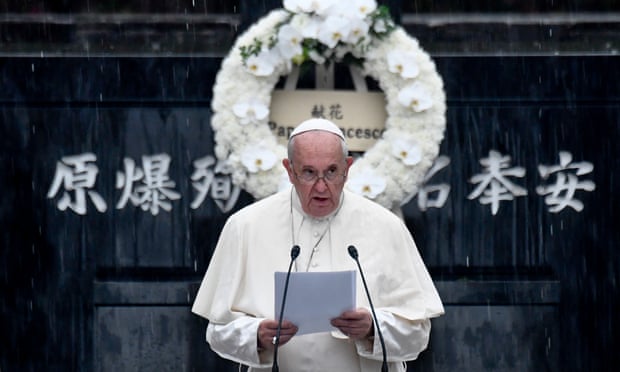
Pope Francis has condemned the “unspeakable horror” of nuclear weapons during a visit to Nagasaki, one of two Japanese cities destroyed by American atomic bombs towards the end of the second world war.
Speaking on the second day of the first papal visit to Japan for 38 years, Francis urged world leaders to end the stockpiling of nuclear weapons, saying it offered their nations a false sense of security.
“Convinced as I am that a world without nuclear weapons is possible and necessary, I ask political leaders not to forget that these weapons cannot protect us from current threats to national and international security,” he told hundreds of people at the city’s rain-drenched atomic bomb hypocenter park on Sunday.
Earlier, Francis had placed a wreath and prayed at the foot of a memorial to the 74,000 people who died instantly and in the months after the US dropped a nuclear bomb on Nagasaki on 9 August 1945, three days after it had carried out a nuclear attack on Hiroshima, in which 140,000 people died by the end of the year.
‘Sickening’: Jo Swinson condemned for unhesitatingly saying she would use nuclear weapons
This is a disgraceful response from @JoSwinson. Not for the 1st time in this general election, she confirms she's ready to press the nuclear button. Not even a moment's hesitation about the prospect of killing millions of people. We need better than this#ITVDebate #VoteOutNukes pic.twitter.com/W84cuLTuoy
— CND (@CNDuk) November 19, 2019
Deval Patrick: the latest presidential candidate to be uninformed on nuclear weapons
A whole slew of 2020 candidates have either pleaded ignorance on certain nuclear policies or given answers that were borderline incomprehensible.
ARTICLE BY JOHN KRZYANIAK | thebulletin.org
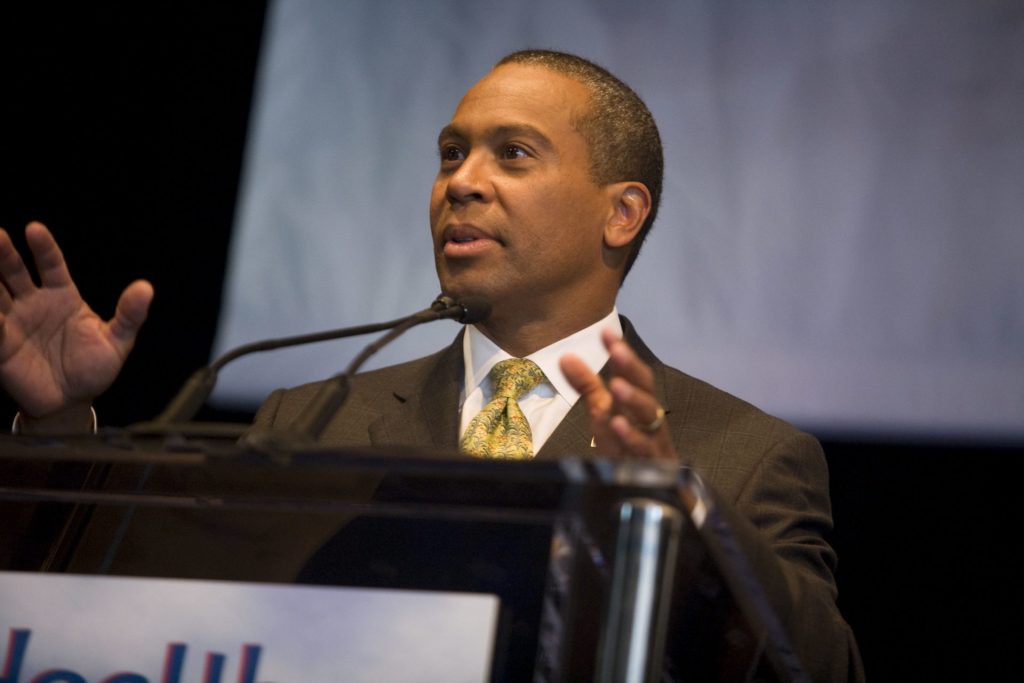
Deval Patrick, the former governor of Massachusetts, became the latest latecomer to the 2020 presidential campaign when he entered the fray last week. At the time of this writing, he does not have very many clear policy positions, or even a campaign website. But anyone running for president—even someone who’s still on the honeymoon period of his announcement—should expect to be asked tough policy questions, especially on important issues like nuclear weapons. Was Patrick prepared? Well, not really.
In a video circulating on social media, Jeremy Love, who identifies himself as a board member of New Hampshire Peace Action, approaches Patrick and starts to ask him about a no-first-use policy in the United States.
US to Europe: Fix Open Skies Treaty or we quit
ARTICLE BY JOE GOULD & AARON MEHTA | defensenews.com
WASHINGTON — NATO allies worried U.S. President Donald Trump will abandon the Open Skies Treaty have been told the administration views the arms control agreement as a danger to U.S. national security, and that unless those nations can assuage such concerns, the U.S. will likely pull out, Defense News has learned.
At a meeting in Brussels last week, Trump administration officials laid out for the first time a full suite of concerns with the treaty and made clear they were seriously considering an exit. The agreement, ratified in 2002, allows mutual reconnaissance flights over its 34 members, including the U.S. and Russia.
The U.S. outreach comes amid unusually strong and coordinated pressure from European allies inside and outside of NATO upon both the administration and Congress to remain in the treaty — and before a planned NATO leaders summit in London next month.
Allies generally argue the treaty is a valuable channel for transparency and dialogue between Russia and the United States, the world’s top two nuclear superpowers.
Screw Nevada, New Mexico, and Texas?! U.S. House Energy & Commerce Committee approves dangerously bad nuke waste bill
H.R. 2699 aims to open one or more dumps in the Southwest — so-called consolidated interim storage facilities (CISFs), targeted at New Mexico and/or Texas, as well as a permanent burial dump at Yucca Mountain, Nevada, on Western Shoshone Indian land. If any one of these dumps open, large-scale shipments of high-risk irradiated nuclear fuel, by road, rail, and/or waterway, would travel through most states, past the homes of millions of Americans.
H.R. 2699, the Nuclear Waste Policy Amendments Act of 2019, was passed by the U.S. House Energy & Commerce Committee on Wed., Nov. 20, by voice vote.
 That is, there is no roll call record as to how each U.S. Representative voted.
That is, there is no roll call record as to how each U.S. Representative voted.
Voice votes are usually applied only to non-controversial matters, such as naming a post office. This dangerously bad high-level radioactive waste legislation should be among the most controversial bills Congress addresses.
DIA on Iran nuclear program
A Defense Intelligence Agency report made public this week concludes that Iran’s government remains prepared to pursue nuclear weapons and missiles to deliver them.
ARTICLE BY BILL GERTZ | thewashintontimes.com
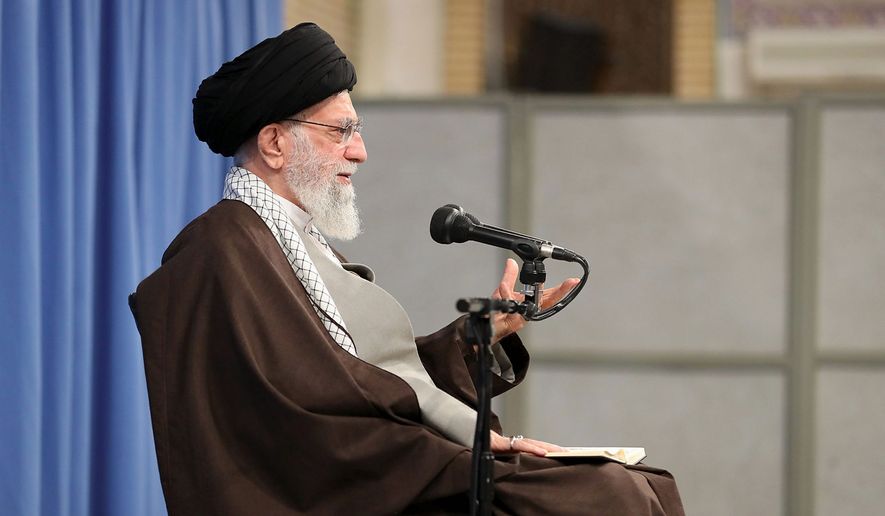
“Iran’s overarching strategic goals of enhancing its security, prestige, and regional influence have led it to pursue nuclear energy and the capability to build missile-deliverable nuclear weapons, if it chooses to do so,” says the report, “Iran Military Power.”
The report says Iran currently has no nuclear weapons and under the 2015 international nuclear deal agreed not to pursue nuclear arms. However, work by Tehran on space launcher vehicles indicates that Iran continues to develop long-range missiles that could be used for nuclear strikes.
While lacking intermediate-range and intercontinental-range missiles, “Tehran’s desire to have a strategic counter to the United States could drive it to develop and eventually field an ICBM,” the report said.
Plutonium Pit Production Workshop 11/19
https://www.facebook.com/NukeWatch.NM/videos/825812604488302/
[embeddoc url=”https://nukewatch.org/wp-content/uploads/2019/11/MK-11-19-19-Pu-Pits-W87-1.pptx” download=”all” viewer=”google”]
1:30PM TODAY on KTRC Talk Radio 1260 AM: Marylia Kelly of Tri Valley CARES
Tune in here ↓
FBI agent who raided Rocky Flats Plant to speak
Lipsky, who continues to raise concerns about the dangers of radioactive waste, will be in Santa Fe this week for a workshop organized by Nuclear Watch New Mexico, which opposes plans for pit production at Los Alamos National Laboratory. The event takes place Wednesday evening at the Mud Gallery.
ARTICLE BY: MARK OSWALD | abqjournal.com

SANTA FE, N.M. — Jon Lipsky is a retired federal agent with a big notch in his gun – he shut down a plant that made plutonium parts for the nation’s nuclear weapons.In an episode unique in American history, in June 1989, Lipsky led the FBI’s raid on the U.S. Department of Energy’s Rocky Flats Plant in Colorado, where the cores of nuclear weapons, or “pits,” were made.
Later, under a plea deal, the private contractor that ran the plant for the DOE – Rockwell International – admitted to four felonies and six misdemeanors for environmental crimes and paid the government $18.5 million. The plant formally closed forever in 1992 and the U.S. has made only a handful of pits since.
3:00PM TODAY on KTRC Talk Radio 1260 AM: Jay Coghlan of Nuclear Watch New Mexico and Jon Lipsky, the FBI agent who led the 1989 raid investigating environmental crimes that shut down the Rocky Flats Nuclear Bomb Plant
Tune in here ↓
PODCAST: Living On The Edge November 14, 2019 – LANL & Plutonium
Scott Kovac of Nuclear Watch New Mexico and Jon Lipsky, the FBI agent who led the 1989 raid investigating environmental crimes that shut down the Rocky Flats Nuclear Bomb Plant join Xubi to talk about Nuclear weapons, Nuclear clean up and Pit production plans at LANL.
12 years and counting: Effort to lock Hanford’s radioactive waste in glass faces more delays
Feds aim to push back the opening of ‘glassification’ plants, while state officials say the Department of Energy has been underfunding the cleanup of America’s most poisoned site.
Already 12 years behind schedule, a project at the Hanford nuclear complex meant to transform millions of gallons of radioactive waste into benign glass faces yet another delay.
ARTICLE BY: JOHN STANG | crosscut.com
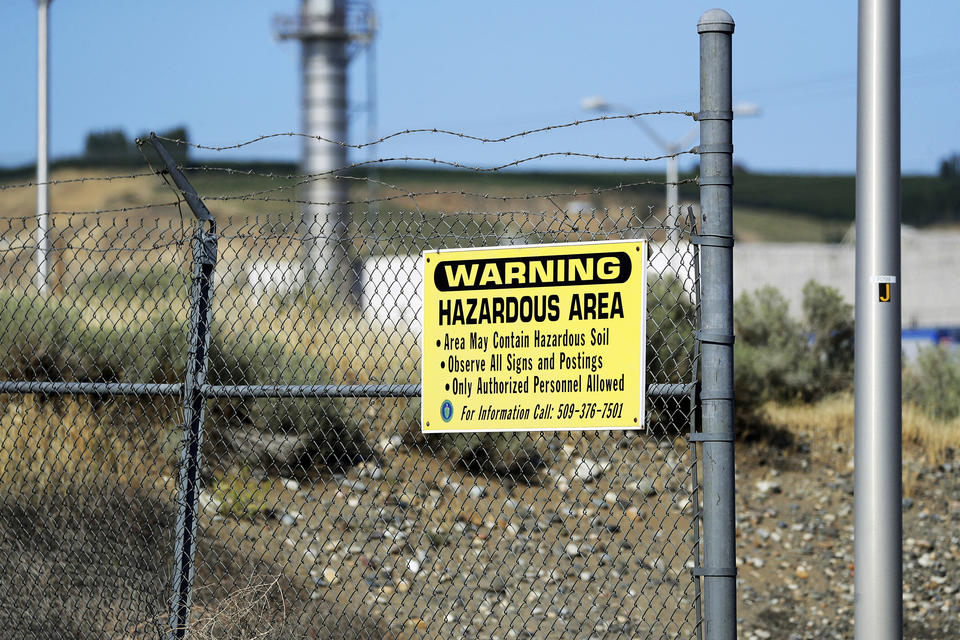
Since the 1990s, Washington state has been prodding the U.S. Department of Energy to build two “glassification” plants at Hanford that would permanently contain the waste stored in aging tanks on the site. Delays have added to the cost of the project, now estimated at $17 billion.
Glassification was supposed to begin in 2007. On the current schedule, lower-level radioactive waste wouldn’t be entombed in glass cylinders until 2023. And the high-level radioactive wastes? At present, glassification of that waste is set to begin in 2036, 29 years behind the original deadline.
The Energy Department wants to push that target back even further, and last month began negotiations with state leaders to do so. Those negotiations are also expected to address whether additional tanks must be built to hold the waste, a move the state supports, but which the DOE has been reluctant to adopt
“We want to try to come up with a schedule that doesn’t have to be revised every few years,” said Suzanne Dahl, section manager for tank waste management with the state Department of Ecology. Dahl noted that the longer the project takes, the more it will cost the federal government.
Located dead center in the 584-square-mile Hanford Nuclear Reservation is the most radiologically and chemically polluted spot in the Western Hemisphere. The site’s 177 underground tanks hold 56 million gallons of radioactive fluids, sludges and chunks, mixtures of roughly 100 different substances.
Nuclear watchers warn of pit production hazards, consequences during Aiken forum
The environmental disaster at the nixed Rocky Flats Plant in Colorado should be a red flag to those in the CSRA, watchdogs cautioned Tuesday, as the nation’s energy and defense departments consider establishing a new nuclear weapons mission at the sprawling Savannah River Site.
ARTICLE BY: COLIN DEMAREST | aikenstandard.com

SRS Watch Director Tom Clements and representatives of the Rocky Mountain Peace and Justice Center in Colorado on Tuesday warned roughly two-dozen forum attendees of health and environmental repercussions that could come with a local plutonium pit production mission, as has been suggested.
The Rocky Flats Plant was the last place the federal government produced pits, nuclear weapon cores, en masse.
It was raided by the FBI decades ago following a clandestine investigation, was subsequently shuttered and then shoddily cleaned up, according to Pat Mellen, a Colorado-based attorney who spoke Tuesday.
“It was an absolute disaster,” Clements said of the Rocky Flats facility, which is near Denver. “Plutonium fires, releases, worker exposure, downwind exposure. We have been where you’re at right now, and we did it wrong,” Mellen said, speaking after the SRS Watch director. “We did it wrong at Rocky Flats.”
The Department of Defense and the National Nuclear Security Administration, part of the Department of Energy, in May 2018 recommended producing pits at the Savannah River Site, about 30 minutes south of Aiken.
While many local officials and lawmakers have welcomed the enduring mission, others, like Clements, have expressed repeated concerns.
“I used to tell students, ‘If you want to be protected from Rocky Flats, don’t breathe,'” said LeRoy Moore, another speaker at the Tuesday night event. That comment received some laughs.
The proposed production hub at SRS, a never-completed and repurposed Mixed Oxide Fuel Fabrication Facility, would be one prong in a two-pronged plan. Another 30 pits per year would be produced at Los Alamos National Laboratory in New Mexico, according to the recommendation.
Here’s how a CR could hurt America’s nuclear weapons modernization
“There could also be high-dollar costs. Responding to a lawsuit by environmental groups trying to halt the construction of the Y-12 facility in Tennessee, NNSA said a six- to 12-month delay in construction at that location could result in almost $1 billion in extra costs for taxpayers and the agency may have to lay off 1,000 construction personnel. Those numbers, first reported by the Exchange Monitor, likely have resonance with other potential delays at construction sites caused by a CR — meaning construction delays at one or more sites could quickly become costly for an agency whose facilities and construction needs have traditionally been underfunded.”
ARTICLE BY: AARON MEHTA | defensenews.com
WASHINGTON — A long-term continuing resolution will result in delays for modernizing America’s nuclear warheads, while putting at risk an already challenging plan to build plutonium pits needed for the next generation of U.S. intercontinental ballistic missiles, nuclear officials are warning.
The National Nuclear Security Administration is a semiautonomous agency under the Department of Energy that handles the manufacturing and maintenance of America’s nuclear warheads. Like other government agencies, NNSA would be limited to fiscal 2019 funding limits under a continuing resolution, and it would be unable to start new contracts.
The current continuing resolution, or CR, is set to end Nov. 21, but there is little expectation that regular budgeting will then resume. Congress is debating the merits of pushing the CR through December, but analysts are concerned the CR could extend into next year.
“We are in a situation right now where we have single-point failures throughout our enterprise,” Lisa Gordon-Hagerty, the NNSA administrator, said during a Defense Writers Group breakfast earlier this month. “It’s necessary for us, for the NNSA and for the nuclear security enterprise to receive consistent and robust funding to modernize our infrastructure as well as continue ongoing operations.”
“We’re looking at where we can move funding insofar as CRs will allow us to do so,” she added. “We’re working very closely with OMB and the administration to see what we can do to continue our important programs to modernize the infrastructure as well as the stockpile and our workforce initiatives and our endeavors.”
$1.5 MILLION IN NEW GRANTS TO STOP NUCLEAR THREATS
The Ploughshares Fund board of directors recently awarded grants to over 20 organizations
The Ploughshares Fund board of directors recently awarded $1.5 million in new grants to over 20 organizations working to end nuclear threats.
“These investments will develop new champions, provide vital research and empower American citizens to create a new vision for a saner nuclear policy,” said Ploughshares Fund President Joe Cirincione. “We have a balanced portfolio,” Cirincione explained, “The board invests in the best expert research, the most effective advocates, the clearest media messengers and, increasingly, in the new mass movements energizing public involvement on policy issues.”
For example, a new grant to National Security Action will allow that organization of former and future government officials to craft a new nuclear posture plan for the United States. To promote diplomacy and reduce the risk of war, the board gave a grant to the Quincy Institute for Responsible Statecraft to help launch this new institute and work on the threat of new wars in the Middle East and to promote diplomacy with North Korea. “We want to inject new ideas and proposals, providing political space to de-escalate current tensions and create viable diplomatic solutions,” said Director of Programs Michelle Dover.
EU Labors to Keep Nuclear Deal Alive After New Iran Moves
“It’s a great agreement and we need to keep it alive,” Slovakia’s foreign minister, Miroslav Lajcak, told reporters.
However, the Europeans are hardly surprised by Iran’s actions. They believe the writing has been on the wall ever since Trump withdrew from the nuclear agreement last year, claiming that it does not to stop Tehran from developing missiles or undermining stability in the Gulf region.
“Sadly, it’s a degradation that was to be expected,” Asselborn said.
ARTICLE BY: LORNE COOK | dailyinterlake.com
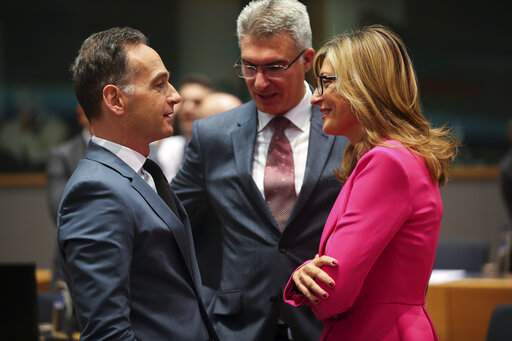
BRUSSELS (AP) — European Union foreign ministers on Monday affirmed their support for the nuclear deal with Iran, after the Islamic Republic began enrichment work at its Fordo site in a fresh act of defiance that seems likely to spell the end of the painstakingly crafted international agreement.
At talks in Brussels, the ministers mulled what action to take as they awaited a new report from the International Atomic Energy Agency later Monday on whether Iran is still complying with its commitments.
EU foreign policy chief Federica Mogherini said that the ministers underlined their “full commitment to the agreement that remains crucial for our security, even if it’s increasingly difficult to preserve it. We will continue our efforts to have a full implementation of the agreement.”
The EU powers that signed the 2015 Iran nuclear deal — Britain, France and Germany — were due to hold talks later Monday in Paris to discuss the next steps once the U.N.’s nuclear watchdog issues its latest findings.
A joint commission meeting of all the signatories is likely to be held in coming days.
One Year After Woolsey Fire, Federal Agencies Escalate Efforts to Abandon Cleanup of Contaminated Nuclear Site Where Fire Began
Boeing, Dept. of Energy and NASA push plans to renege on agreements to fully clean up the Santa Susana Field Lab, point of origin for Woolsey Fire
“Time and again, Boeing has cut corners on safety, whether on its airplanes or at SSFL, putting profits above all else.”
“The failure to clean up the site added insult to injury for people impacted by the fire.”
Contact: Denise Duffield, 310-339-9676 or dduffield@psr-la.org, Dan Hirsch, 831-336-8003 or dhirsch1@cruzio.com, Melissa Bumstead melissabumstead@sbcglobal.net | psr-la.org
One year after the devastating Woolsey Fire began at and burned most of the contaminated Santa Susana Field Laboratory (SSFL,) Boeing, the Department of Energy and NASA are pushing forward plans to abrogate cleanup agreements and leave most of the radioactive and chemical contamination on the site unremediated. SSFL is grossly polluted from decades of nuclear and rocket-engine testing activities including several accidents, spills, and intentional toxic releases.
On November 8, 2018, the Woolsey Fire ignited approximately 1,000 yards from the site of a partial nuclear meltdown of SSFL’s Sodium Reactor Experiment. The fire burned approximately 80% of the contaminated 2,850 acre facility before burning to Malibu, scorching nearly 97,000 acres, 1,643 structures, and prompting the evacuation of more than a quarter million people in one of Southern California’s worst wildfires to date. Three people lost their lives in the fire.
Why should anyone trust LANL on nuclear safety?
Ask the downwinders of nuclear weapons tests at the Marshal Islands and the Nevada Test Site whether the government should be trusted. Why should LANL be trusted, when it used to claim that groundwater contamination was impossible, but today we know it is contaminated with chromium, perchlorates, high explosives, etc.?
More recently, how can the public trust LANL when it sent an improperly prepared radioactive waste barrel that ruptured and closed the Waste Isolation Pilot Plant for three years, contaminating 21 workers with plutonium and costing the American taxpayer $3 billion to reopen?
November 5 This week features Princeton physicist Dr. Zia Mian, sitting down with Michelle Dover to discuss the India-Pakistan nuclear dyad and whether the global nuclear order is worth saving.
“Who decides how human society and human civilization conducts affairs,” Dr. Mian asked Dover. “Nine countries with nuclear weapons or everybody else?”
Before that, Esther Im from the National Committee on North Korea joins Michelle Dover and Akshai Vikram for the Early Warning news segment.
Listen, Subscribe and Share on iTunes · Spotify · SoundCloud · YouTube · Google Play · Sticher
Also available on ploughshares.org/pressthebutton
Gov. Gordon Open to Nuclear Waste Storage
Gov. Mark Gordon says he is open to Wyoming pursuing a nuclear waste storage facility though he doesn’t personally believe it’s the best industry for the state.
ARTICLE BY TOM COULTER | wyomingnews.com
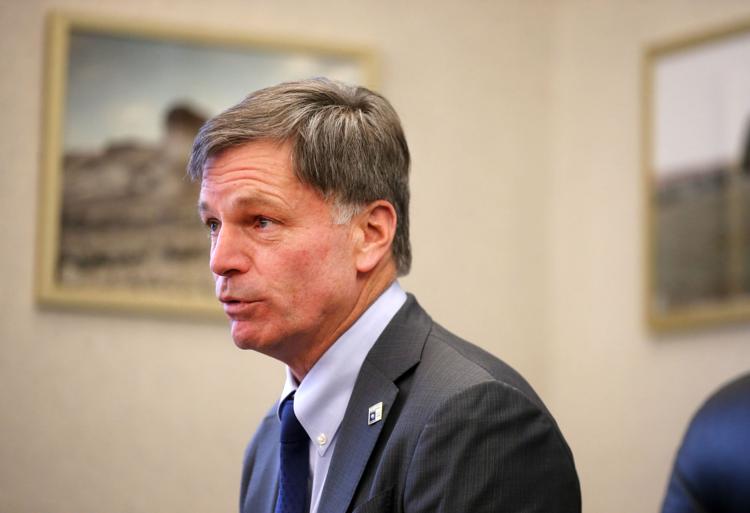
CHEYENNE – Gov. Mark Gordon said last week he could still be convinced to pursue a nuclear waste storage program that will be considered Tuesday in a legislative committee meeting.
During a meeting Monday with the Wyoming Tribune Eagle’s editorial board, Gordon said he would wait to see what the Wyoming Legislature finds in its studies.
“I don’t think it’s the best industry for Wyoming,” Gordon said. “But I would say this emphatically: If there is a good reason to do it, and we have adequate safeguards, though personally I may not feel it’s the best industry for Wyoming, I’m not going to stand in its way.”
During the second day of its meeting next week in Casper, the Legislature’s Joint Minerals, Business and Economic Development Interim Committee will consider a bill authorizing the governor to negotiate with the U.S. Department of Energy to store spent nuclear fuel rods within the state.
Russia says it’s already too late to replace new START treaty
Last Major Nuclear Arms Pact Could Expire With No Replacement, Russia Says
The treaty, disliked by President Trump, will run out in 14 months — and there is too little time to hammer out a new one, a Russian official said.
ARTICLE BY TOM BALMFORTH | reuters.com
MOSCOW (Reuters) – Russia said on Friday there was no longer enough time left for Moscow and Washington to negotiate a full-fledged replacement for the New START nuclear arms control treaty before it expires in February 2021.
The New START accord is the last major nuclear arms control treaty between the world’s two biggest nuclear powers and limits the number of strategic nuclear warheads they can deploy.
The fate of the accord has been in the spotlight since Washington in August pulled out of another landmark strategic arms accord, the Intermediate-Range Nuclear Forces Treaty (INF), citing violations by Russia that Moscow denies.
“It’s already obvious that with the time that is left… we will not be able to work out a full-fledged replacement document,” Vladimir Leontyev, a foreign ministry official, was quoted as saying by Interfax news agency.
The treaty can be extended by mutual agreement, but the prospect of that happening is unclear as Washington is not moving quickly and Moscow would need at least half a year to implement any extension agreement, Leontyev said. There was no immediate reaction from Washington to his comments.
The Possibility of Nuclear War Between India and Pakistan Is Greater Than Experts Would Prefer
ARTICLE BY KYLE MIZOKAMI | nationalinterest.org
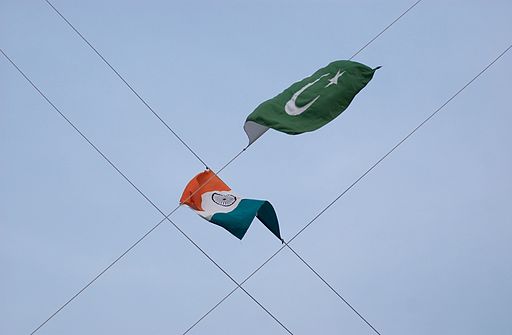
Experts believe Pakistan’s nuclear stockpile is steadily growing. In 1998, the stockpile was estimated at five to twenty-five devices, depending on how much enriched uranium each bomb required. Today Pakistan is estimated to have an arsenal of 110 to 130 nuclear bombs. In 2015 the Carnegie Endowment for International Peace and the Stimson Center estimated Pakistan’s bomb-making capability at twenty devices annually, which on top of the existing stockpile meant Pakistan could quickly become the third-largest nuclear power in the world.
Pakistan and India are clearly in the midst of a nuclear arms race that could, in relative terms, lead to absurdly high nuclear stockpiles reminiscent of the Cold War. It is clear that an arms-control agreement for the subcontinent is desperately needed.
Iran launches more advanced machines to speed up nuclear enrichment: official
Tehran has rejected the Trump administration’s demand that a a new deal imposing stricter limits on its nuclear capacity as well as curbs on its ballistic missile programme and on its regional behaviour.
ARTICLE BY PARISA HAFEZI | reuters.com

DUBAI (Reuters) – Iran said on Monday it had launched a new batch of advanced centrifuges to accelerate uranium enrichment, further reducing compliance with the 2015 nuclear deal following the withdrawal of its arch-foe the United States. Iran has gradually shed commitments made under the deal with world powers since being hit with renewed U.S. sanctions that have crippled its oil exports. Germany said on Monday Iran’s announced roll-out of modernised centrifuges jeopardises the accord and called on Tehran to return to it.
Responding to Washington’s “maximum pressure” campaign, Iran has bypassed the restrictions of the deal step-by-step – including by breaching both its cap on stockpiled enriched uranium and on the level of enrichment.
Tehran, however, has left room for diplomacy by saying that talks are possible if Washington lifts all the sanctions and itself returns to the nuclear deal.
“If they (Washington) return to their commitments, we also will go back to our commitments,” Salehi said, adding that “Iran is ready to fully implement the deal if its rights are respected”.
What Does Science Say About the Need for Nuclear? Not Necessary.
ARTICLE BY JESSICA MCDONALD | factcheck.org
Ryan Jones, an expert in electricity systems and a co-founder of Evolved Energy Research, a consulting company that models low-carbon transitions, agreed. “Anyone who says that nuclear is 100% necessary on a technical basis, I would claim, just hasn’t looked at the alternatives in enough detail,” he said in an email.
Most experts FactCheck.org contacted, including those who think nuclear power should remain an option, said that from a technical perspective, nuclear is not needed to decarbonize the grid.
The Air Force Has Stopped Using 8-Inch Floppy Disks for Missile Command
The US nuclear forces’ Dr. Strangelove-era messaging system finally got rid of its floppy disks
BY: VALERIE INSINNA | c4isrnet.com
OFFUTT AIR FORCE BASE, Neb. — In 2014, “60 Minutes” made famous the 8-inch floppy disks used by one antiquated Air Force computer system that, in a crisis, could receive an order from the president to launch nuclear missiles from silos across the United States.

But no more. At long last, that system, the Strategic Automated Command and Control System or SACCS, has dumped the floppy disk, moving to a “highly secure solid state digital storage solution” this past June, said Lt. Col. Jason Rossi, commander of the Air Force’s 595th Strategic Communications Squadron.
The communication system which keeps the president in touch with the nuclear triad during a crisis will now be the responsibility of the head of U.S. Strategic Command.
Russia test-fires missile from new nuclear-powered submarine
Russia has successfully test-fired an intercontinental ballistic missile from its latest nuclear-powered submarine, the country’s defence ministry says.
BY: JONATHAN MARCUS | bbc.com
Footage captured overnight shows the release of the so-called Bulava missile from an underwater position in the White Sea, the ministry said.
It was fired from Russia’s new Prince Vladimir submarine and was reported to have travelled thousands of kilometres.
The submarine is expected to be operational by the end of the year.
Completed in the early hours of Thursday, the Bulava missile launch – the first of its kind from the Prince Vladimir – was one of many weapons tests expected to take place in the coming weeks.
Senate Dems likely to block defense spending in border wall dispute
ARTICLE BY JOE GOULD | defensenews.com

WASHINGTON ― Key Senate Democrats signaled Monday their caucus is likely to filibuster a proposed 2020 defense spending bill, which Senate Republican leaders plan to offer for a vote this week.In a Senate floor speech Monday, Majority Leader Mitch McConnell, R-Ky., dared Democrats to hold up the bill, accusing them of blocking a troop pay raise “for the sake of picking a fight with the White House,” even after the raid that killed Islamic State leader Abu Bakr al-Baghdadi.
October 29 This week on Press the Button: Chairman Adam Smith of the House Armed Services Committee. His remarks on the future of U.S. nuclear policy at the National Press Club last week made the news when he said that it was very unlikely major policy provisions would survive conference, particularly on the new, more usable nuclear weapon.
Hear his comments directly in a special edition of Press the Button called “The Chairman’s Choice.”
Geoff Wilson of Council for a Livable World discusses this surprise development with Michelle Dover and Mary Kaszynski of Ploughshares Fund on Early Warning.
Listen, Subscribe and Share on iTunes · Spotify · SoundCloud · YouTube · Google Play · Sticher
Also available on ploughshares.org/pressthebutton
The most radioactive state
Who will be the ultimate bearer of the nation’s nuclear waste?
In Mashable’s series Wasted, reporters dig into the myriad ways we’re trashing our planet. Because it’s time to sober up.
WRITTEN BY MARK KAUFMAN | .Jun 26, 2021 mashable.com
Of all the states in the union, and to the certain dismay of many local residents, New Mexico presently has the potential to become the future bearer of more and more of the nation’s nuclear excesses.
Though New Mexico will resist, and may prevail. “Folks in New Mexico are not going to take it,” said Albuquerque resident Don Hancock, who is the director of the Nuclear Waste Safety program at the Southwest Research and Information Center, an advocacy group focused on environmental and social justice. “We’ll stop this.”
“New Mexicans should not have to tolerate this risk.”
A SKINNY NDAA
Top Armed Services leaders in both houses of Congress are considering passing a slimmed-down National Defense Authorization Act that defers controversial measures for the sake of getting something passed, our colleague Connor O’Brien writes.
“It’s amounted to a backup plan,” House Armed Services Chairman Adam Smith (D-Wash.) told POLITICO, referring to the “skinny NDAA.” “It’s amounted to, we’re going to keep working on the bill itself, try to get resolved the top drawer issue of the [border] wall and we’ll have this as a backup discussion if necessary. I don’t have a problem with that.”
CHECKING TRUMP: More than 40 advocacy groups are out with a letter calling on lawmakers to oppose a final defense bill that doesn’t include the “core progressive priorities” aimed at constraining the Trump administration in the House-passed bill. That includes provisions to limit Trump’s Iran war powers, end U.S. support to the Saudi-UAE coalition in Yemen, bar new detainees at Guantanamo Bay, protect transgender troops and block deployment of new low-yield nuclear warheads.
October 22 Congressman Gerry Connolly (D-VA) gives us an insider view of the impeachment crisis and its impact on US foreign policy. Connolly serves on the Foreign Affairs and the Oversight Committees, both charged with the impeachment inquiry.
Early Warning features Joe Cirincione and Elizabeth Beavers discussing the Turkish president’s recent comments on nuclear weapons, and why we should keep the Open Skies Treaty. Joe Cirincione answers a question from Alec in Louisiana.
Listen, Subscribe and Share on iTunes · Spotify · SoundCloud · YouTube · Google Play · Sticher
Also available on ploughshares.org/pressthebutton
 Calling the National Nuclear Security Administration's latest Record of Decision (Federal Register, October 4, 2019) for the Continued Operation of the Y-12 National Security Complex , "an obvious attempt by the government to deliberately circumvent this Court's ruling," the Oak Ridge Environmental Peace Alliance, Nuclear Watch New Mexico, the Natural Resources Defense Council and four individual co-plaintiffs today filed a Motion to Enforce the judgment handed down in federal court in September by Chief United States District Judge Pamela Reeves.
Calling the National Nuclear Security Administration's latest Record of Decision (Federal Register, October 4, 2019) for the Continued Operation of the Y-12 National Security Complex , "an obvious attempt by the government to deliberately circumvent this Court's ruling," the Oak Ridge Environmental Peace Alliance, Nuclear Watch New Mexico, the Natural Resources Defense Council and four individual co-plaintiffs today filed a Motion to Enforce the judgment handed down in federal court in September by Chief United States District Judge Pamela Reeves.
"Within hours of the Judge's September ruling, NNSA told reporters that it would keep right on doing what it was doing, including building the UPF bomb plant. Then they published the new Record of Decision which is a direct challenge to the Court—it says they have decided they will comply with the Court's order at some uncertain date in the future, and in the meantime, it's business as usual. We went to court in the first place, because 'business as usual' was violating the law." — OREPA coordinator Ralph Hutchison
Erdogan’s Ambitions Go Beyond Syria. He Says He Wants Nuclear Weapons.
“There are approximately 50 US nuclear weapons, stored on Turkish soil. The United States had never openly acknowledged its existence, until Wednesday, when Trump did exactly that. When asked about the safety of these weapons, stored in a bunker controlled by the Americans at Incirlik Air Base, Mr. Trump said, “We have confidence and we have a large air base there, a very powerful air base.” But not everyone is so confident, because the air base belongs to the Turkish government. If relations with Turkey deteriorate, US access to that base is not guaranteed.”
ARTICLE BY DAVID E. SANGER & WILLIAM J. BROAD | nytimes.com

Erdogan is playing before an anti-American domestic audience with his nuclear rhetoric, but he is very unlikely to look for nuclear weapons,,quot; said Jessica C. Varnum, an expert in Turkey at the James Martin Center for Nonproliferation Studies in Middlebury in Monterey, California, “There would be huge economic and reputational costs for Turkey, which would damage the pockets of Erdogan voters.”
A Cheaper Nuclear Sponge
“With today’s technology, land-based [ballistic] missiles are an embarrassment,” the late, great strategist Thomas Schelling wrote in 1987. The weapons, he added, “seem to give the entire deterrent a bad name.”
ARTICLE BY STEVE FETTER & KINGSTON REIF | warontherocks.com

Schelling was right: Intercontinental ballistic missiles (ICBMs) are by far the least valuable leg of the so-called nuclear triad, which also consists of submarine-launched ballistic missiles, and air-delivered cruise missiles and gravity bombs.
So long as U.S. adversaries possess nuclear weapons, we believe the United States should maintain a safe, secure, and effective nuclear arsenal to deter nuclear attacks against itself and its allies. But the Trump administration’s approach to sustaining and upgrading the arsenal is unnecessary, unsustainable, and unsafe. Nowhere is this more evident than with respect to its plan to build a new ICBM.
Instead of proceeding with current plans to build an entirely new ICBM system at a cost that is likely to exceed $100 billion, the Pentagon could save scores of billions — without sacrificing U.S. security — by continuing to rely on a smaller number of existing Minuteman III missiles.
Nuclear News Archives – 2021
Nothing Found
It seems we can’t find what you’re looking for. Perhaps searching can help.


